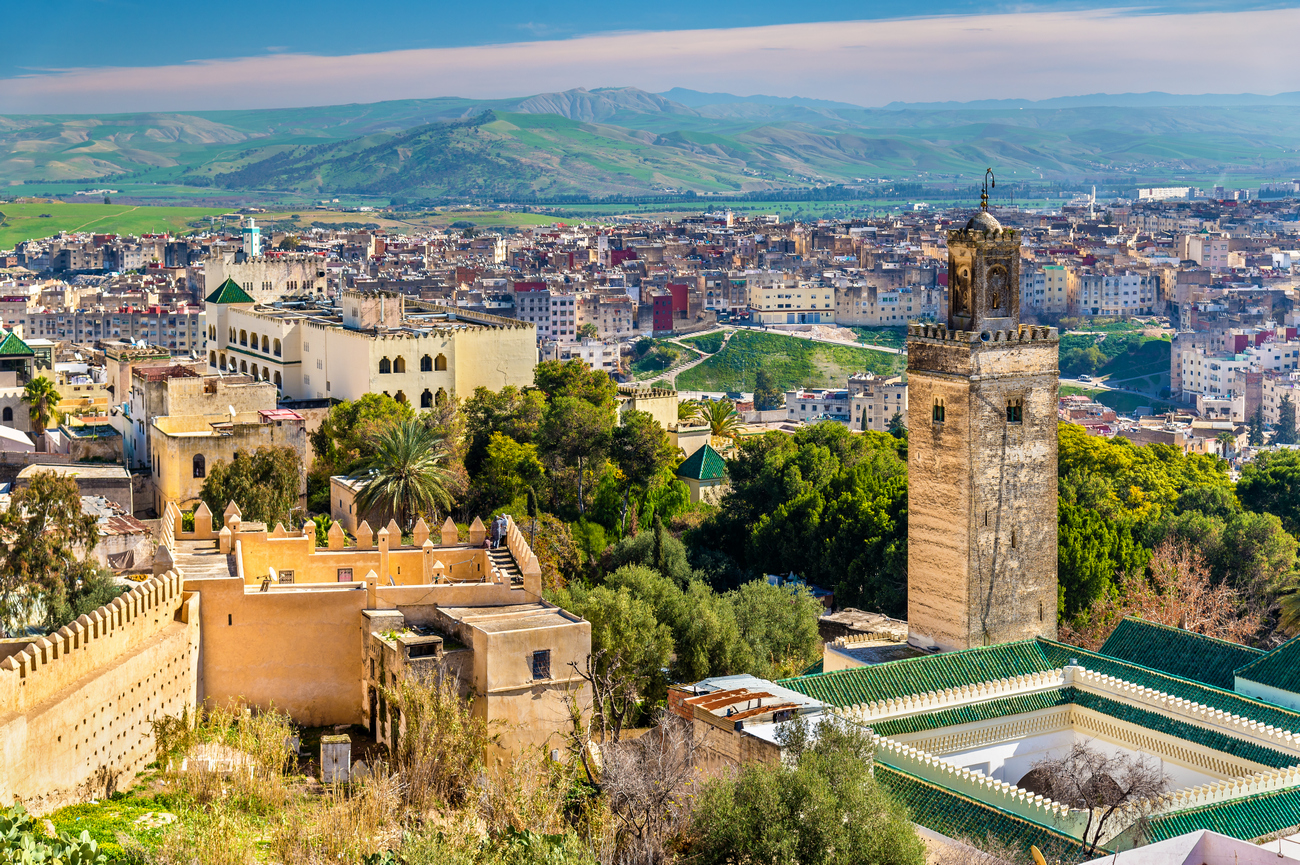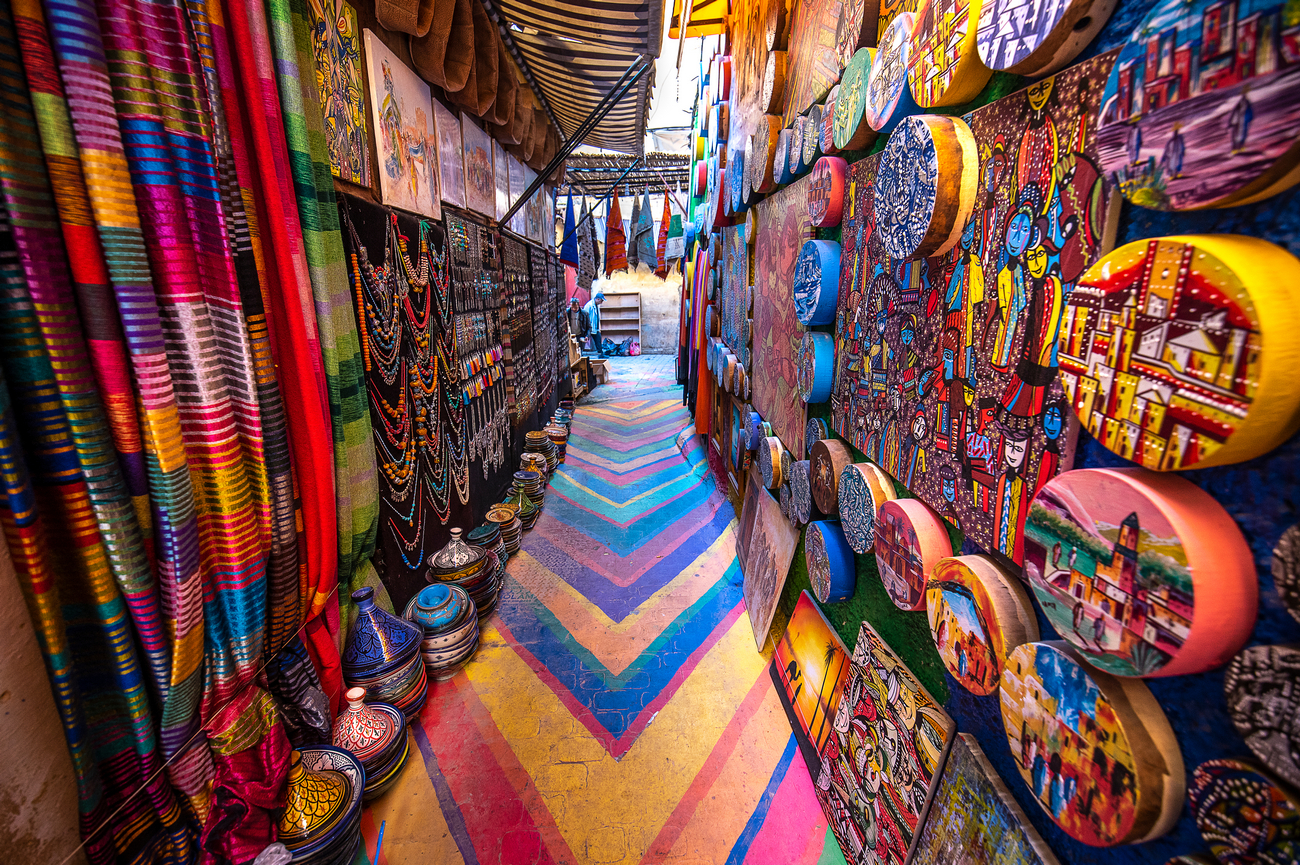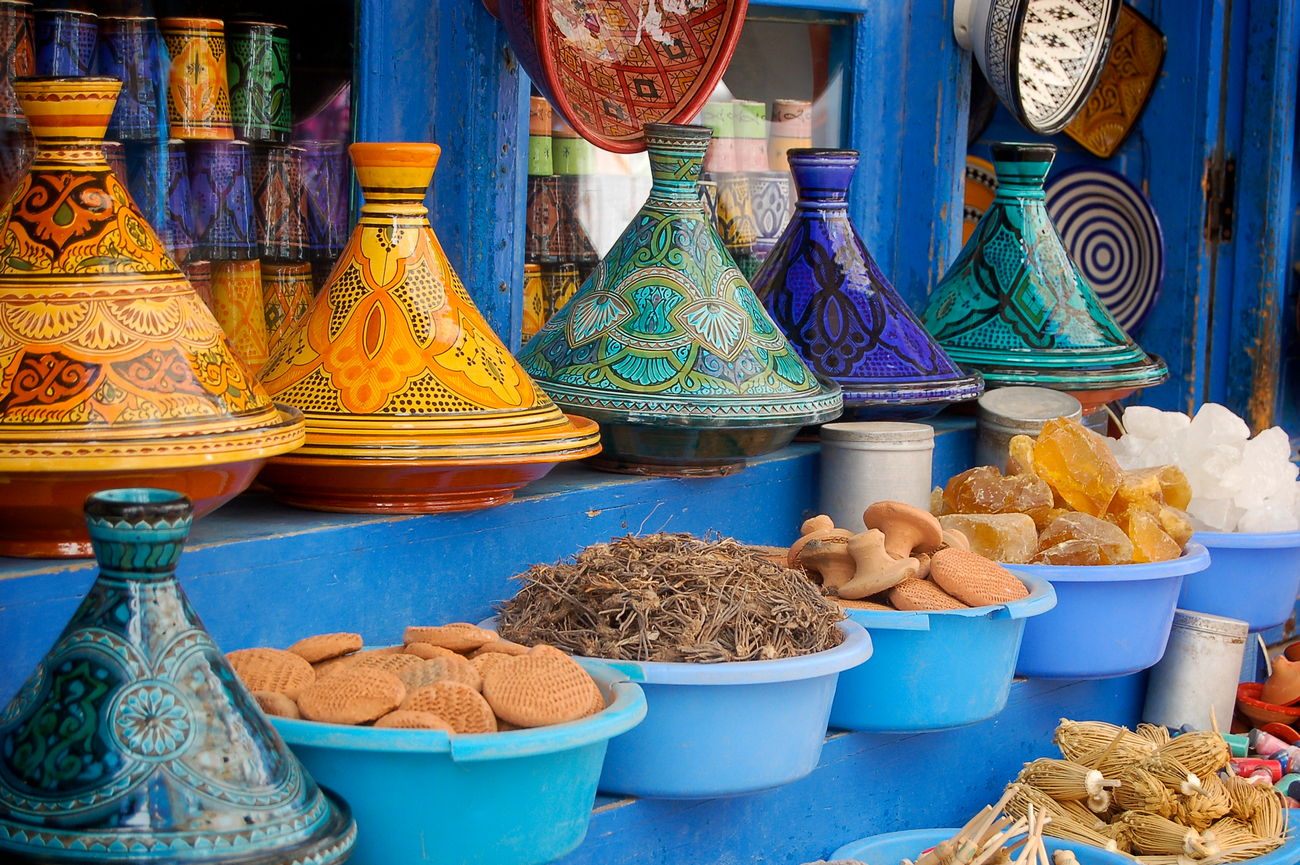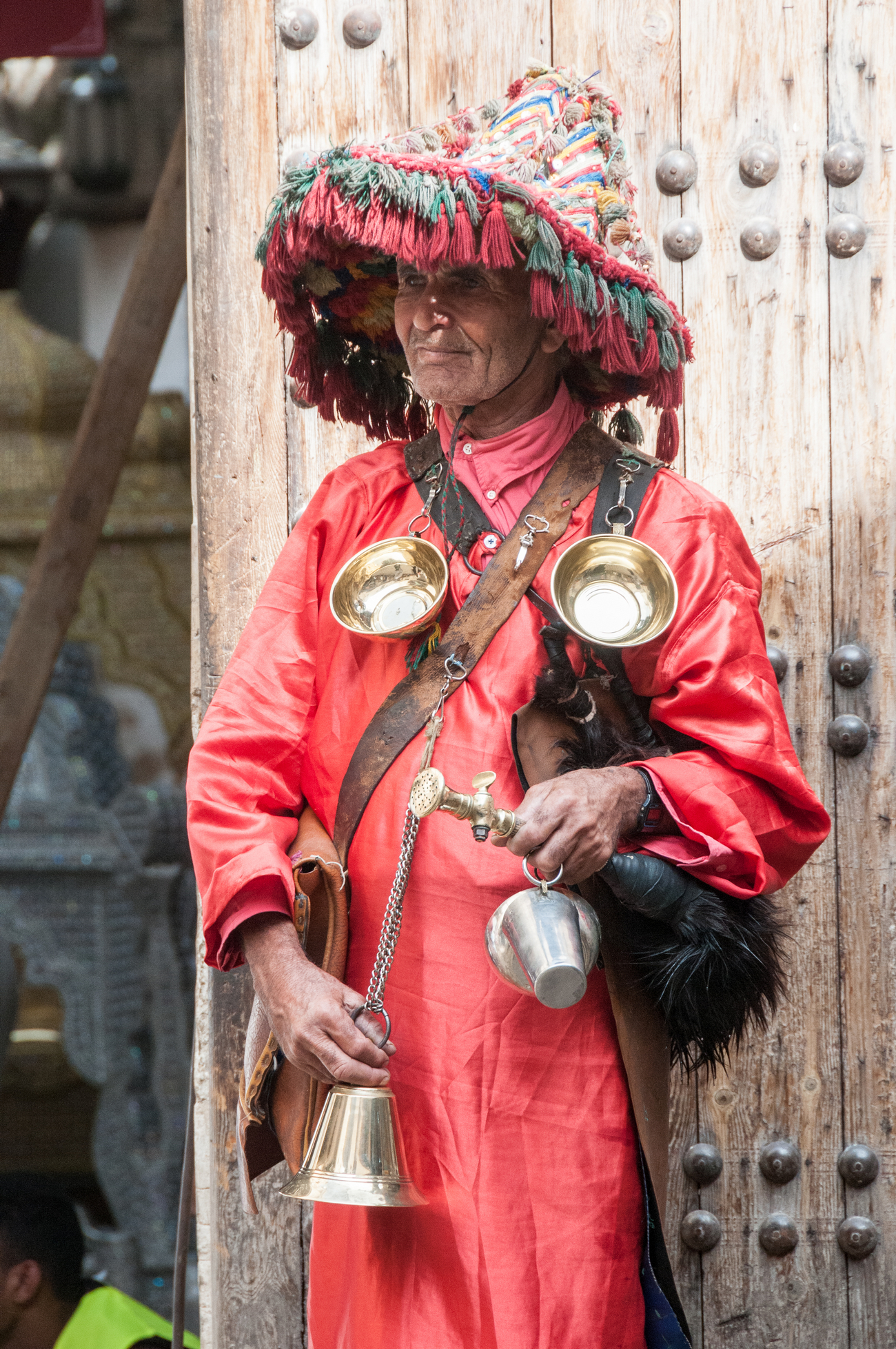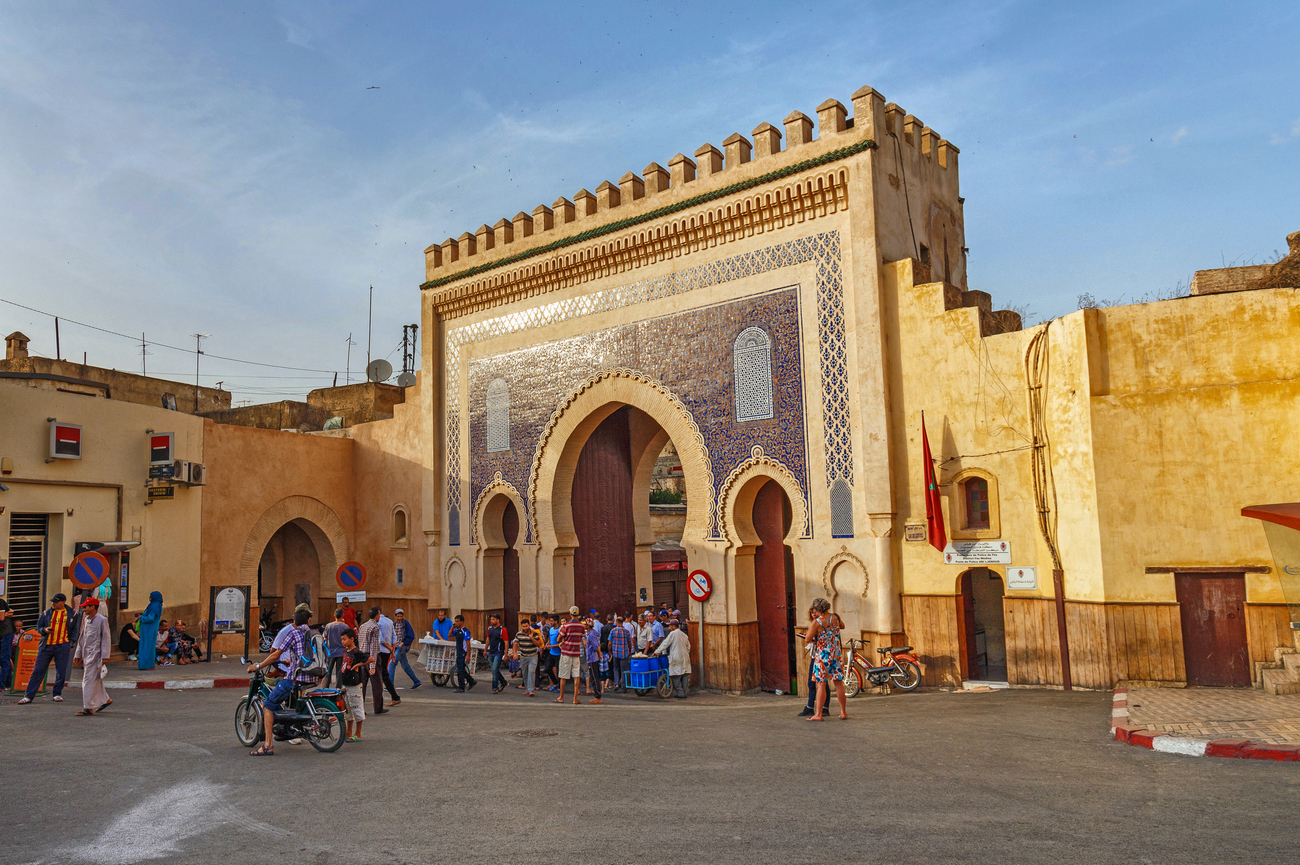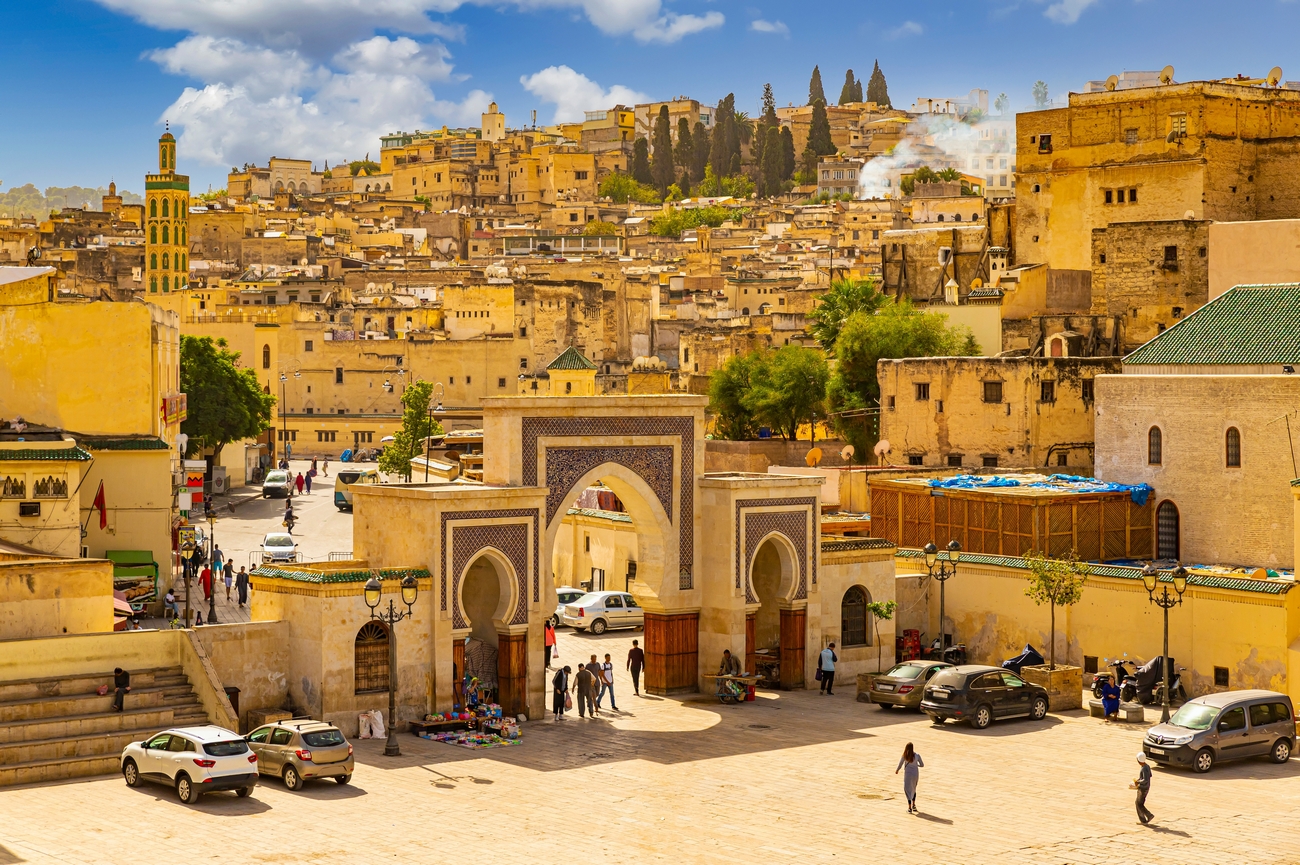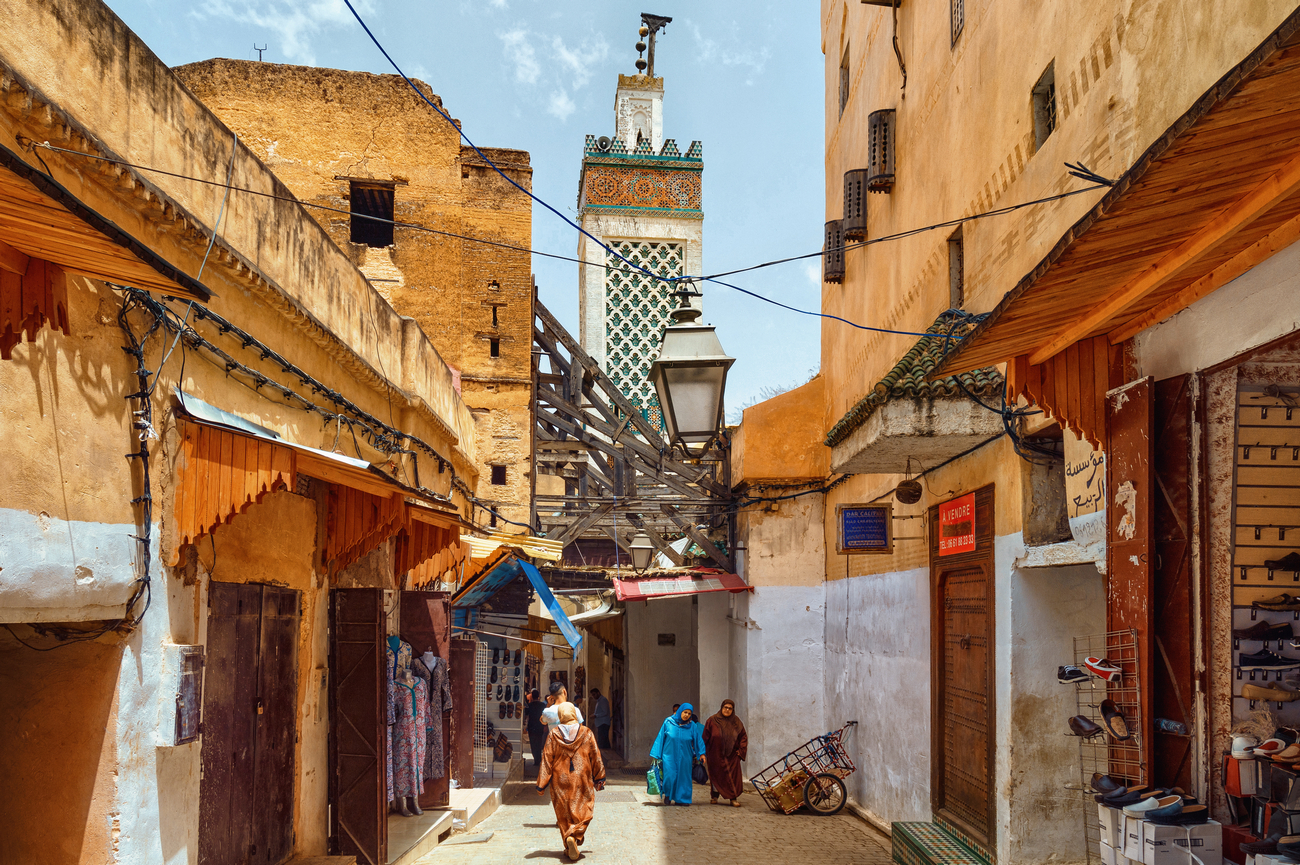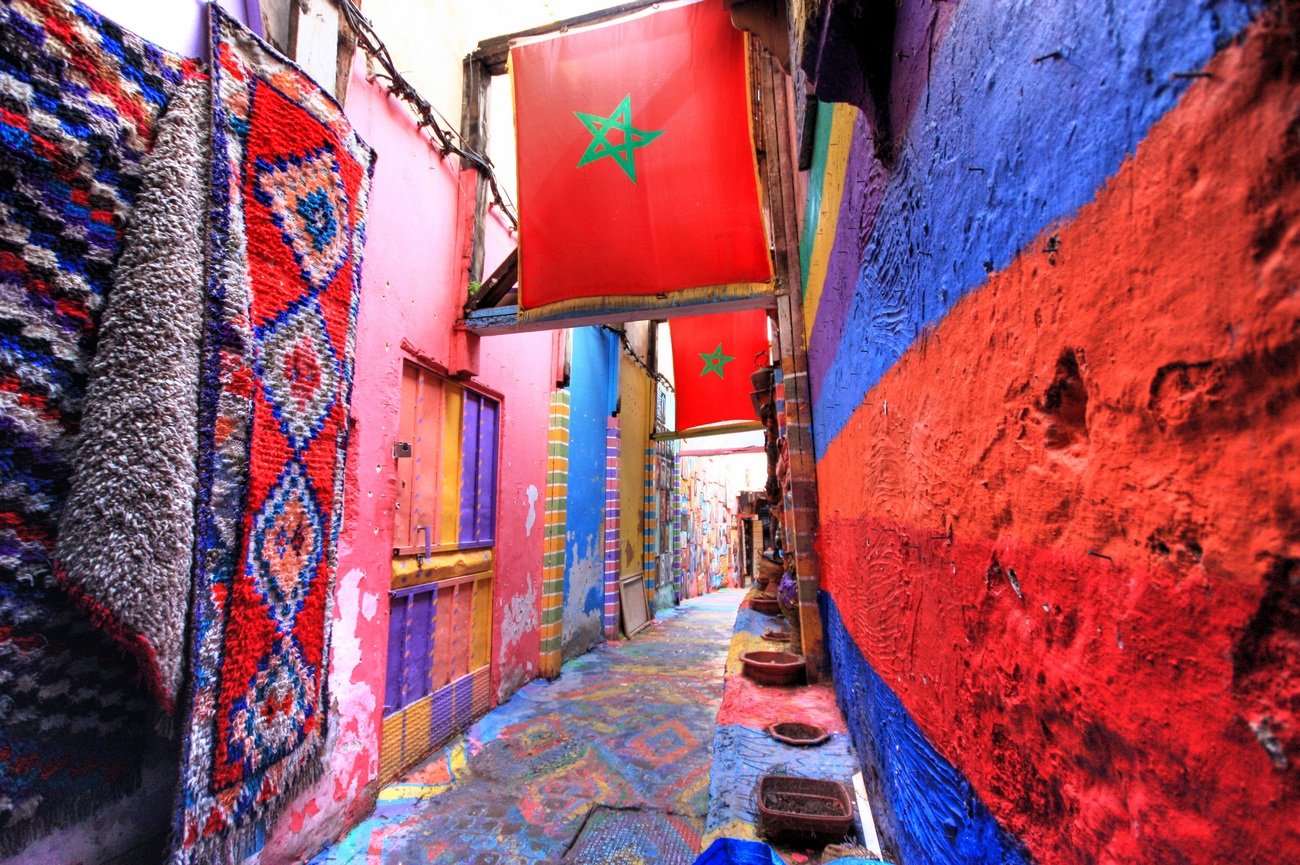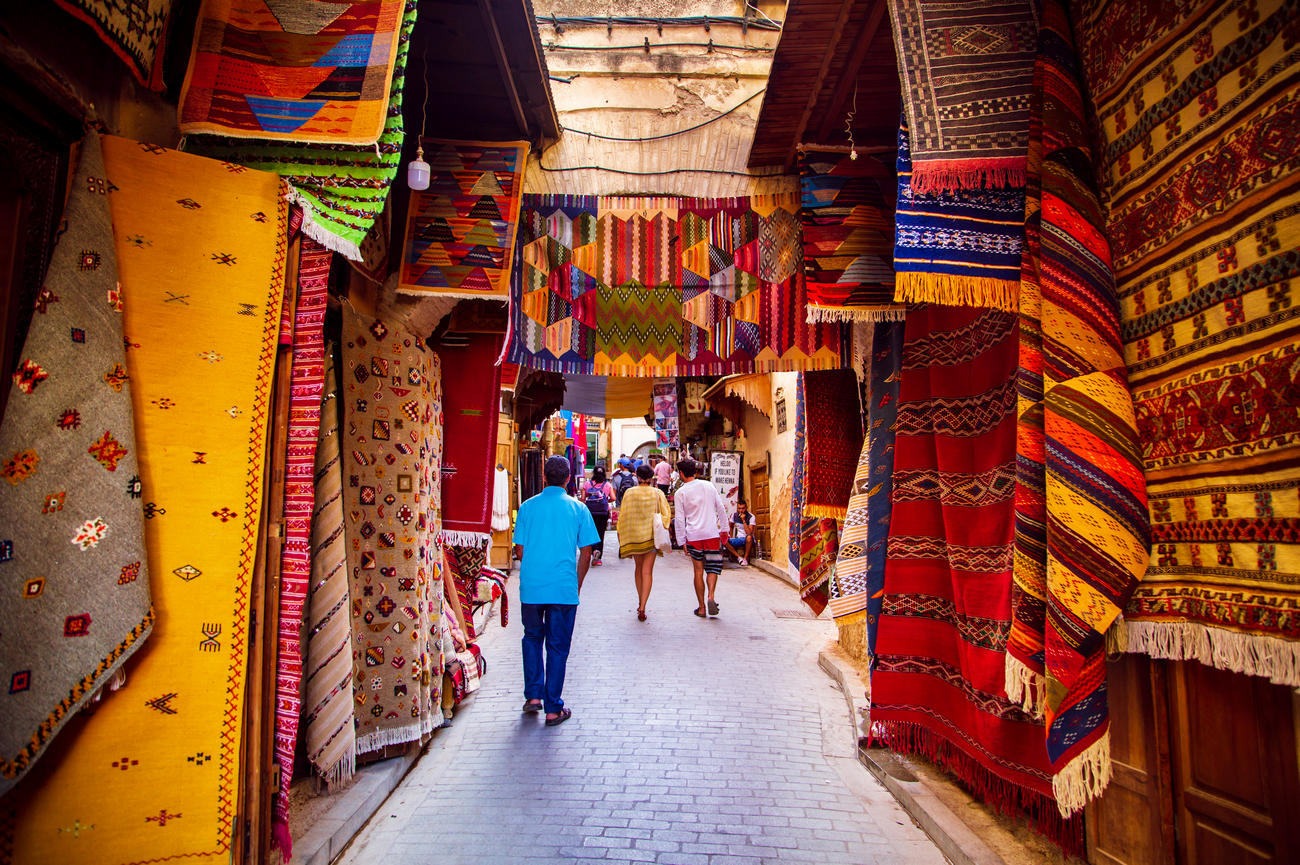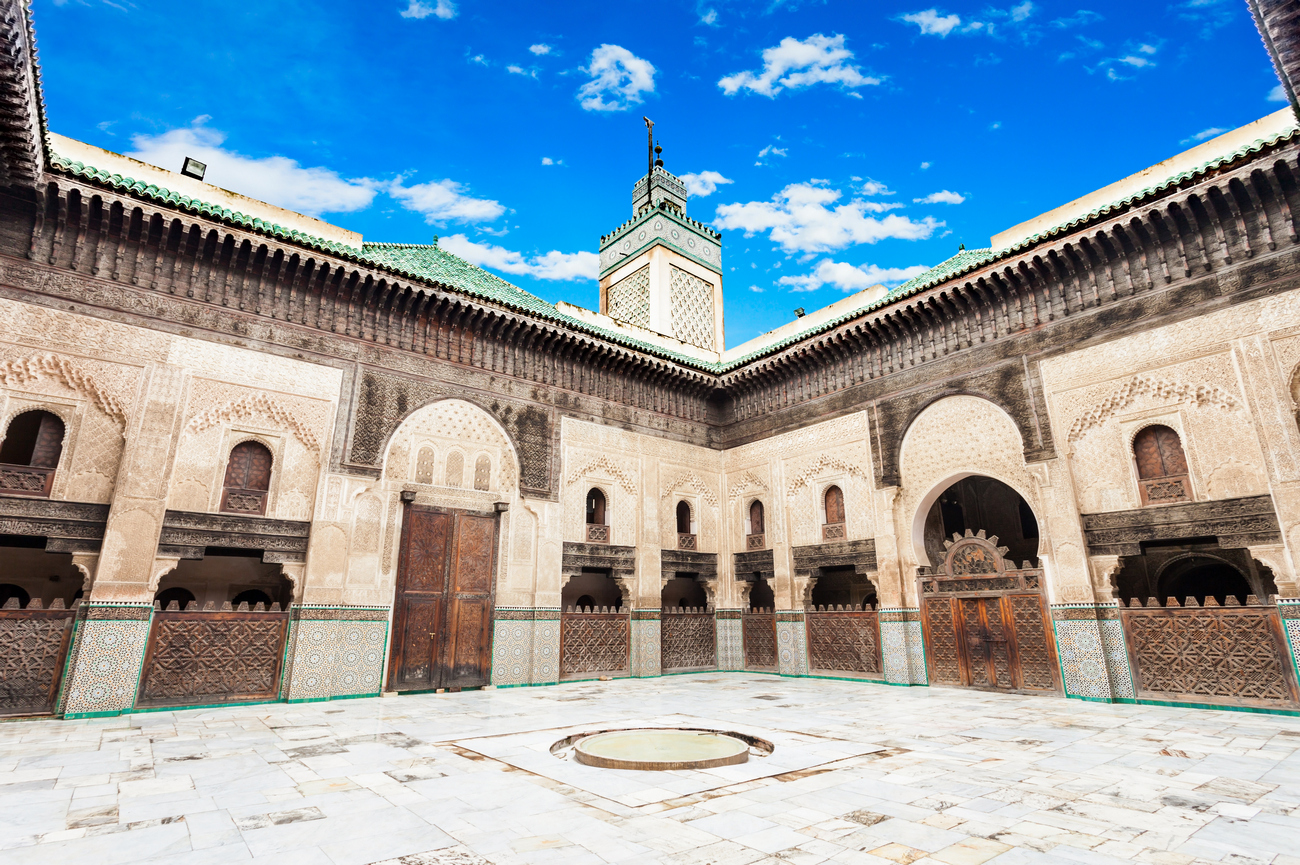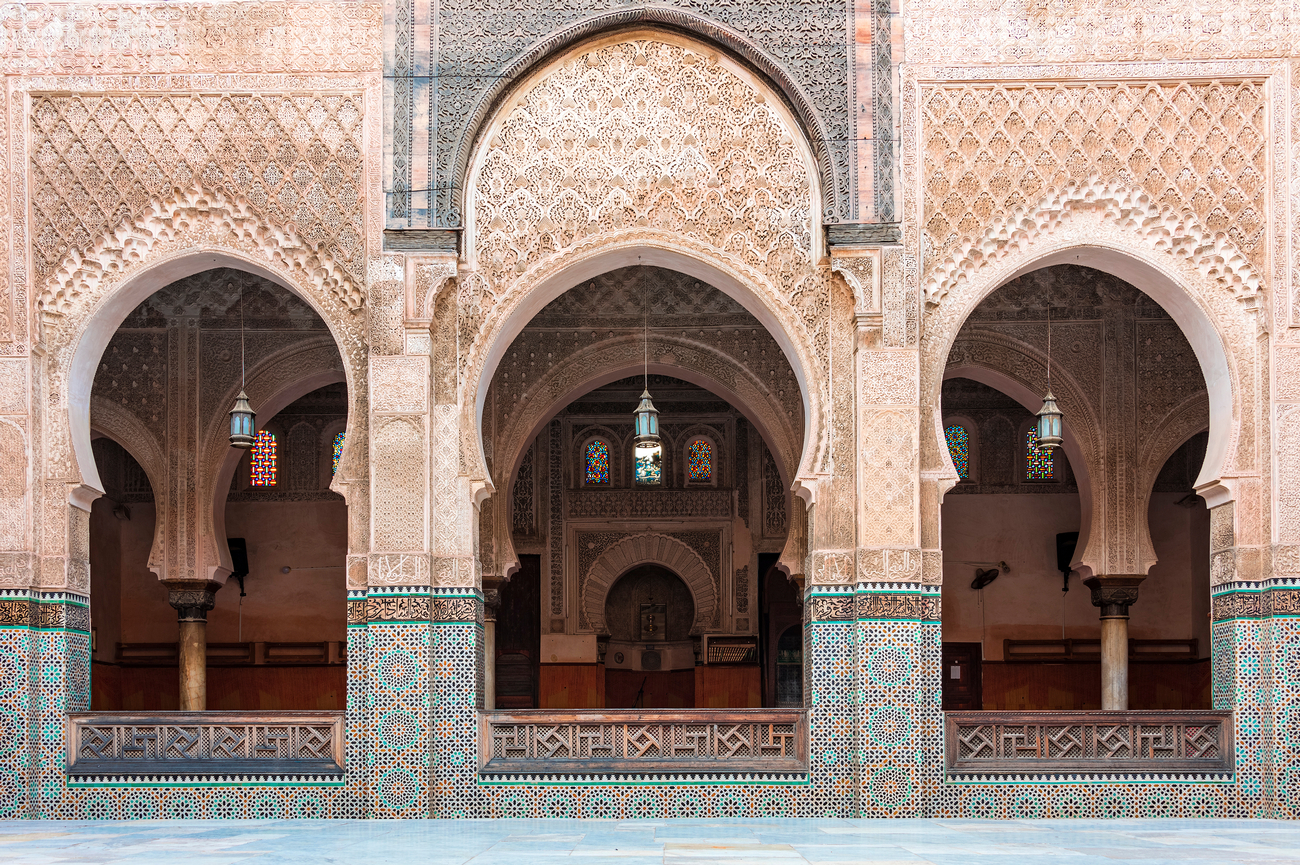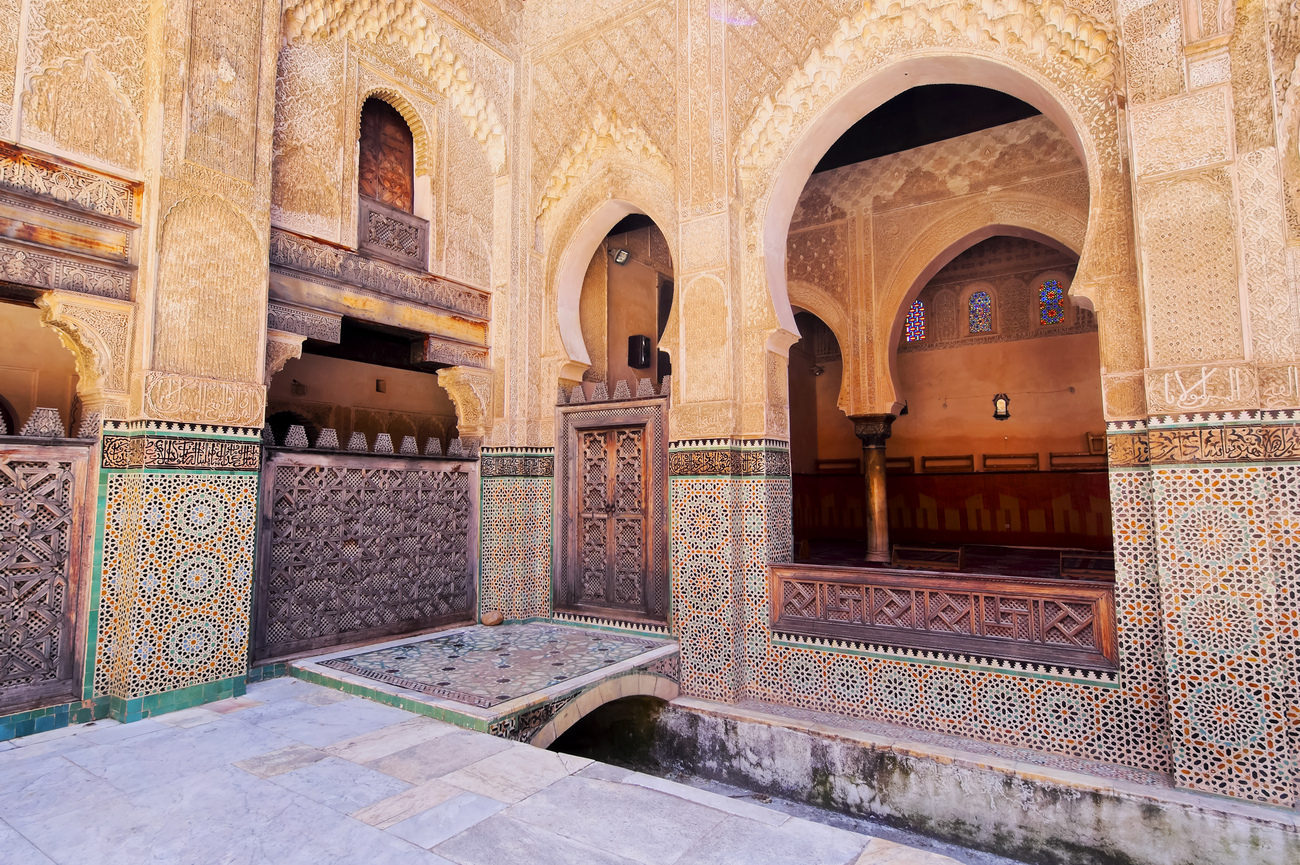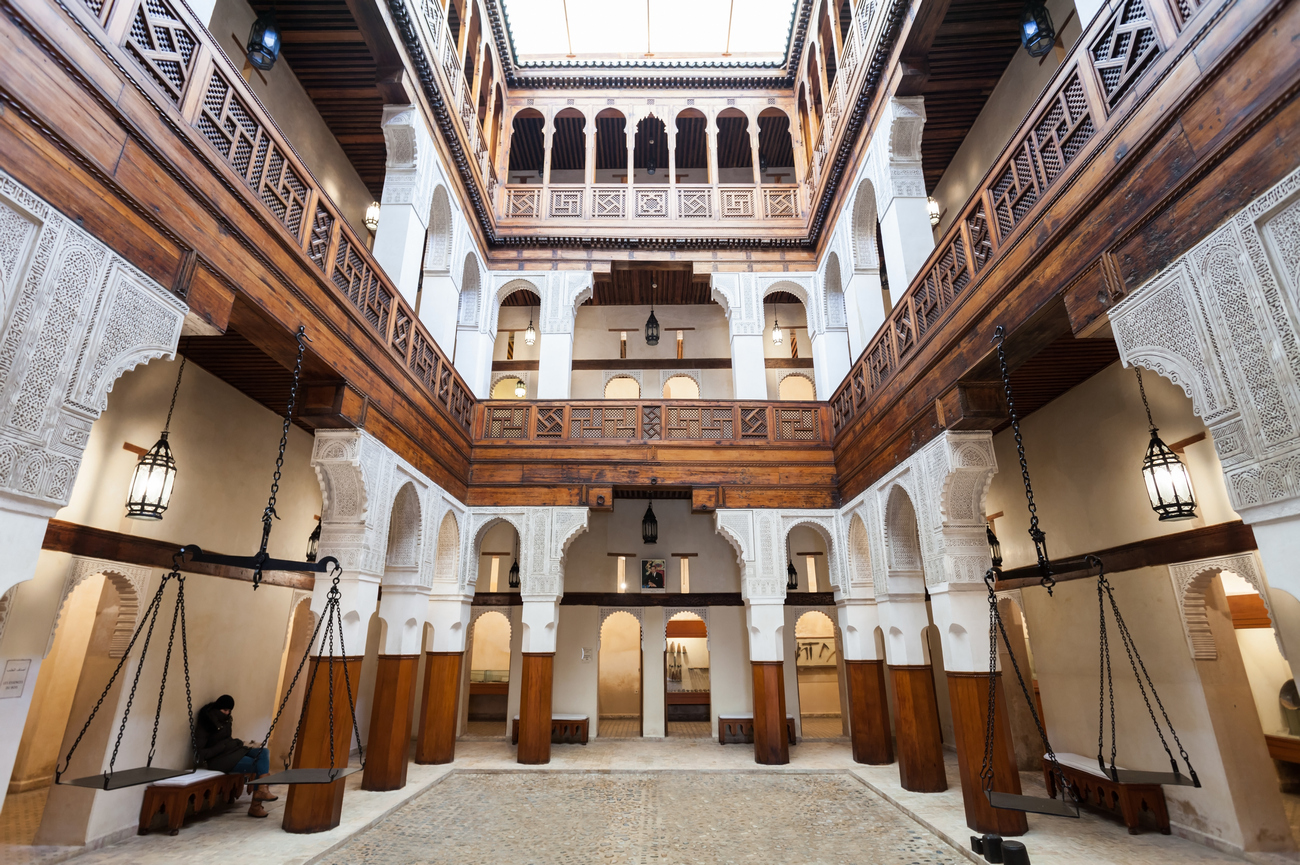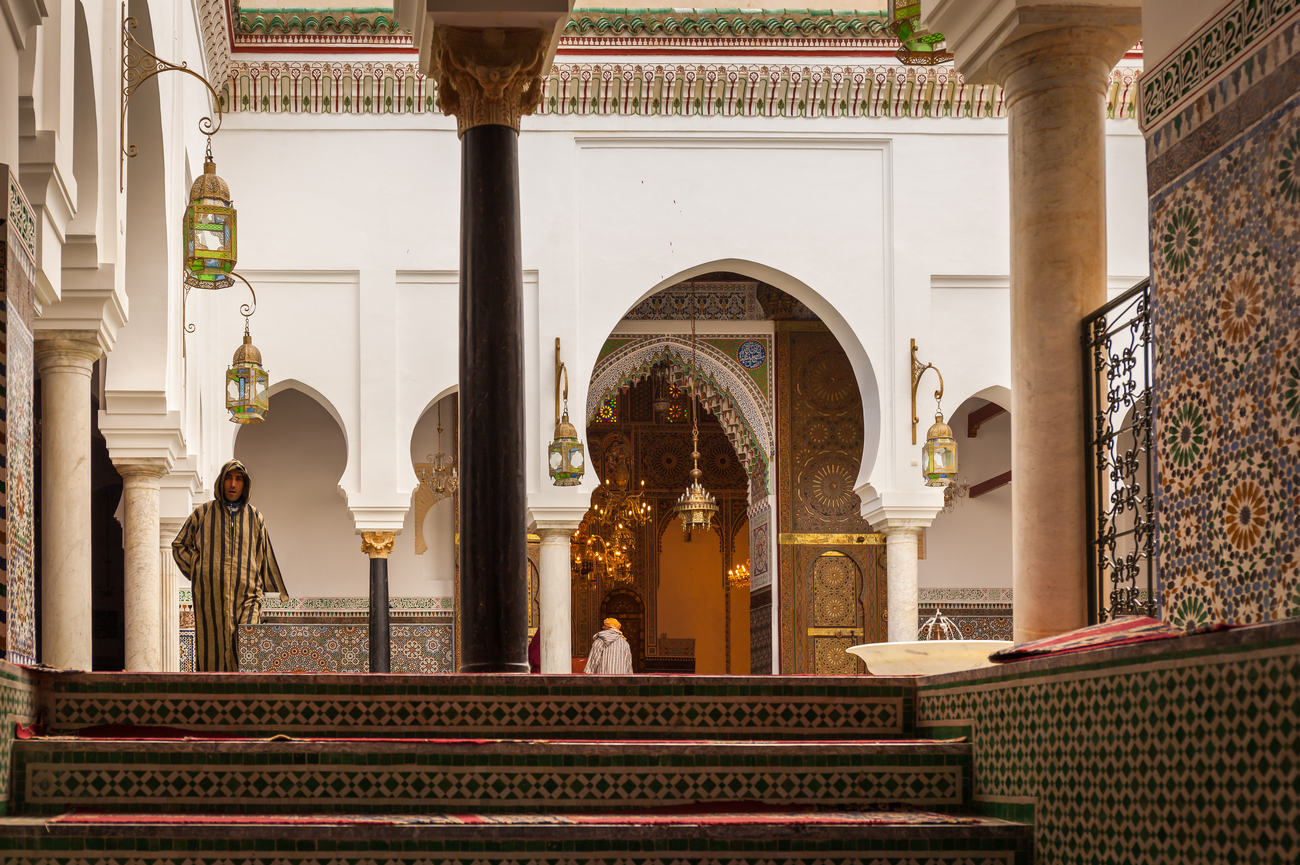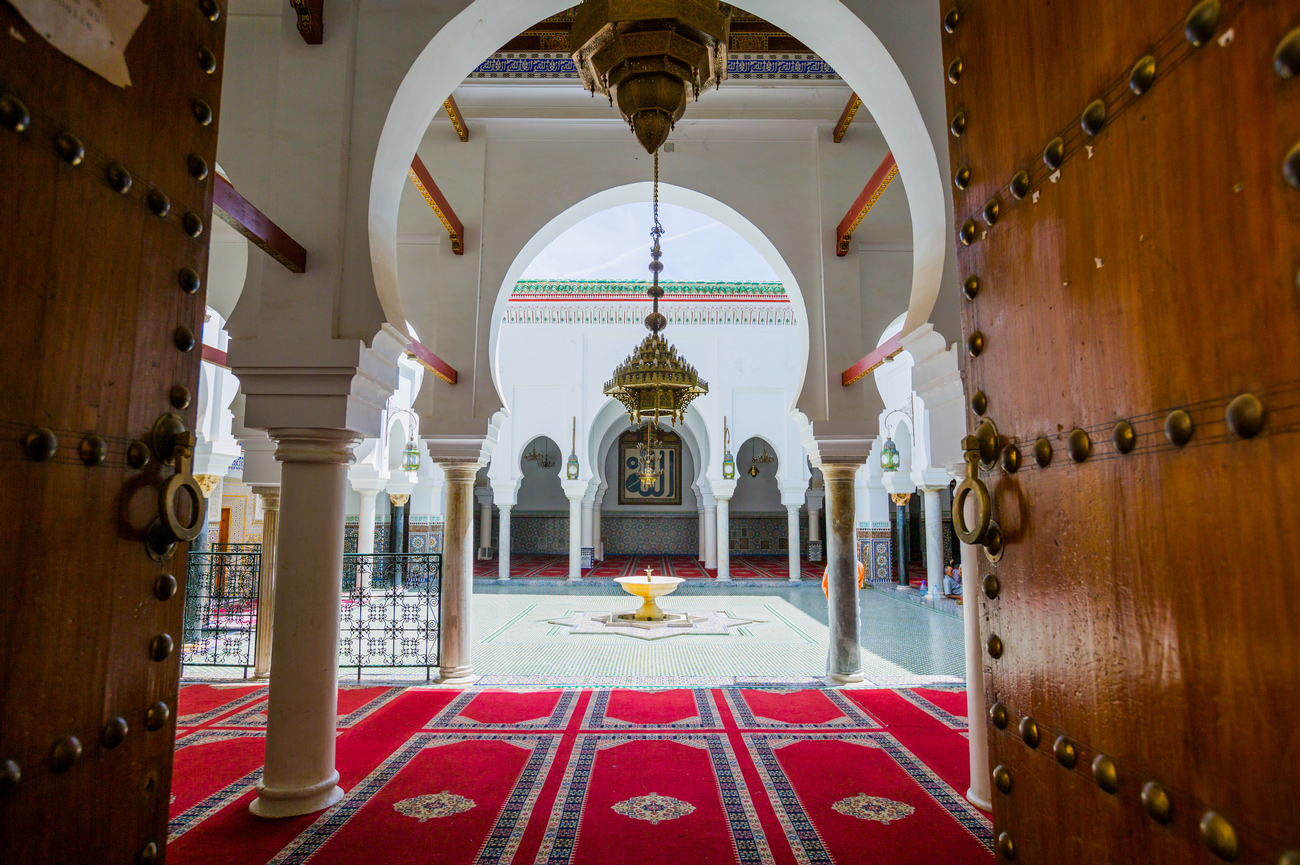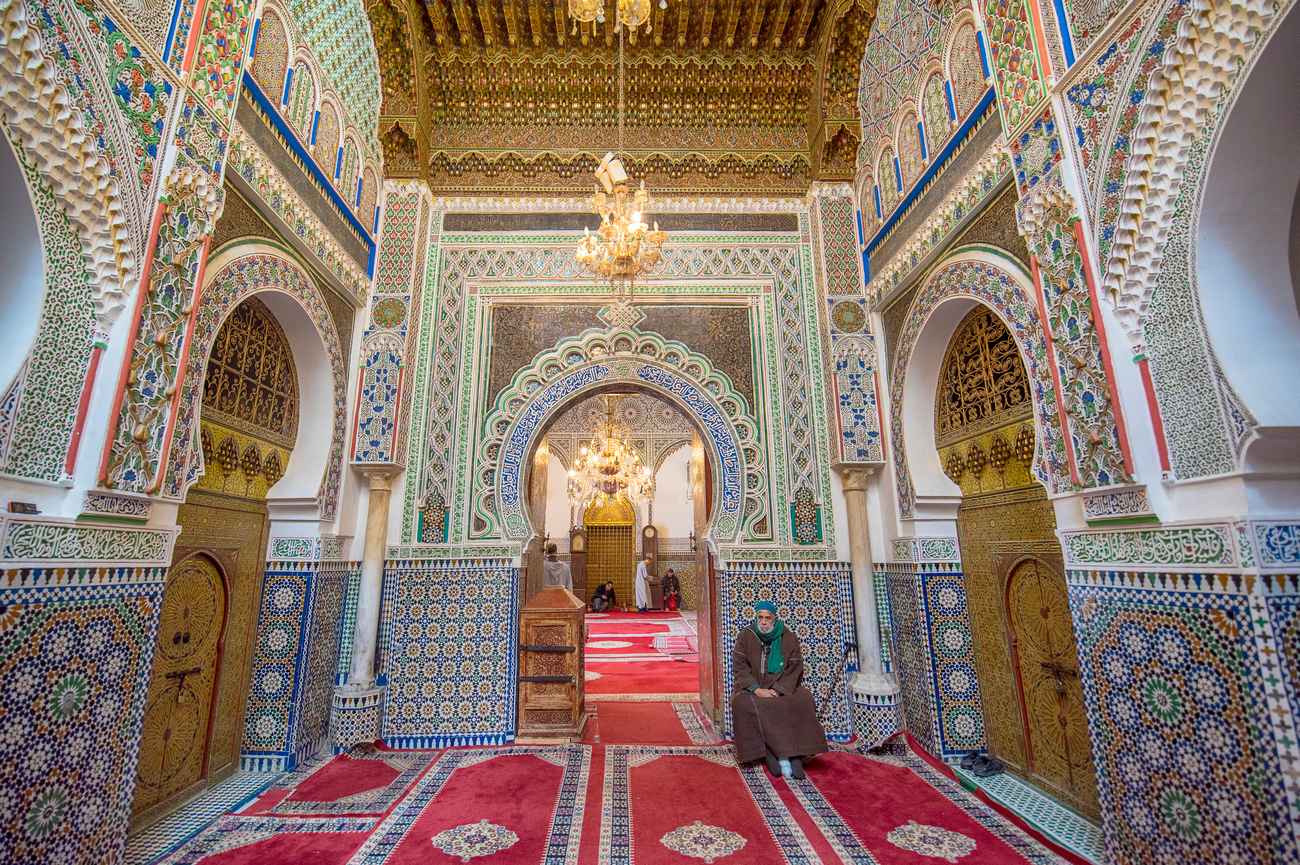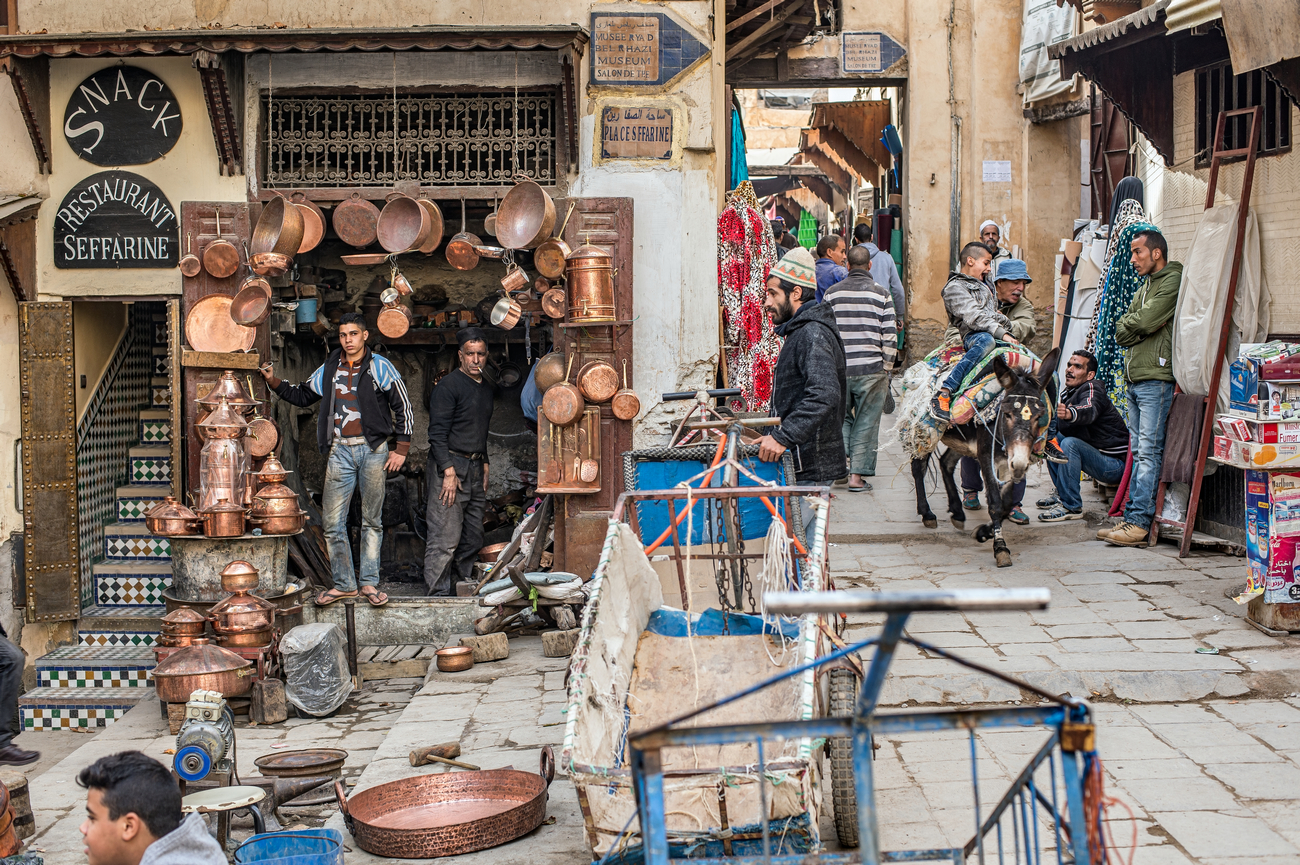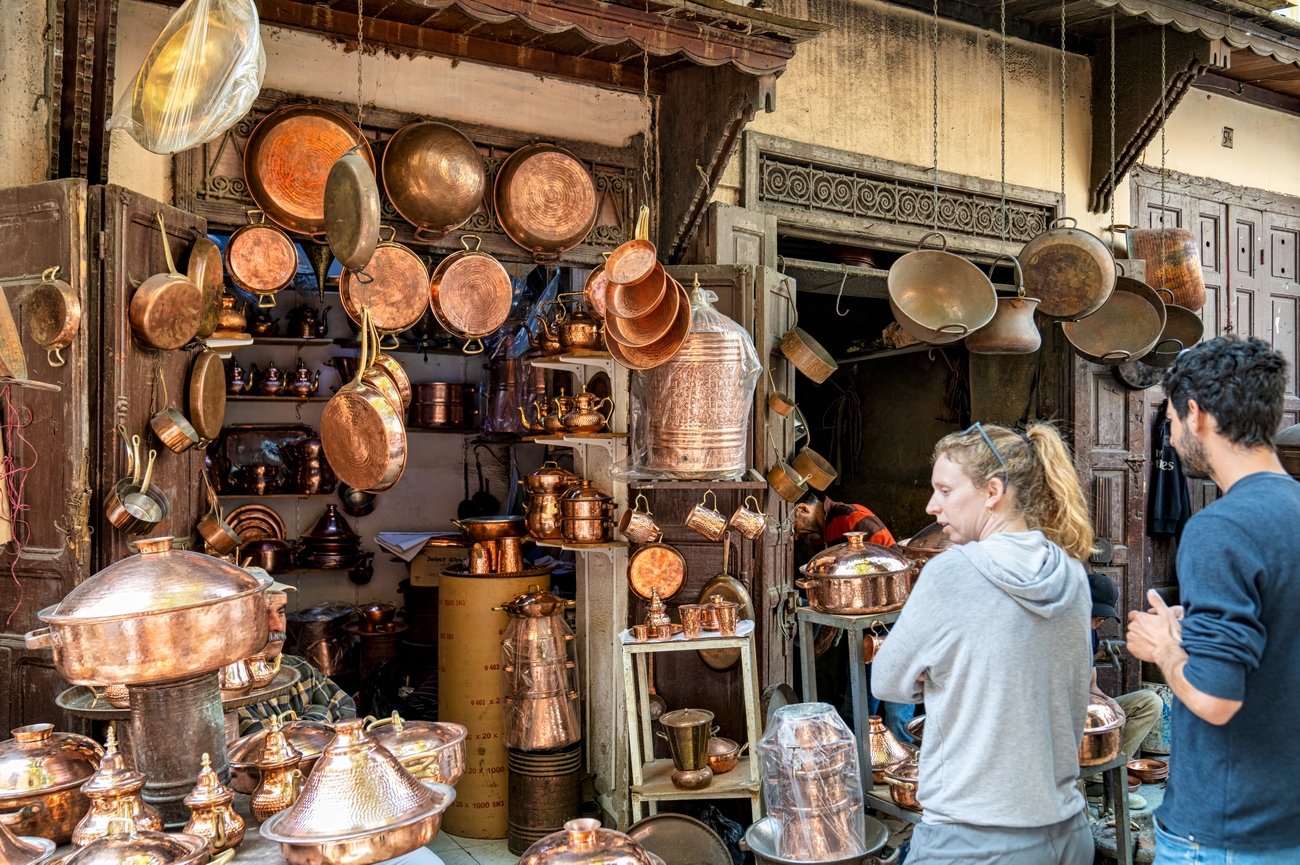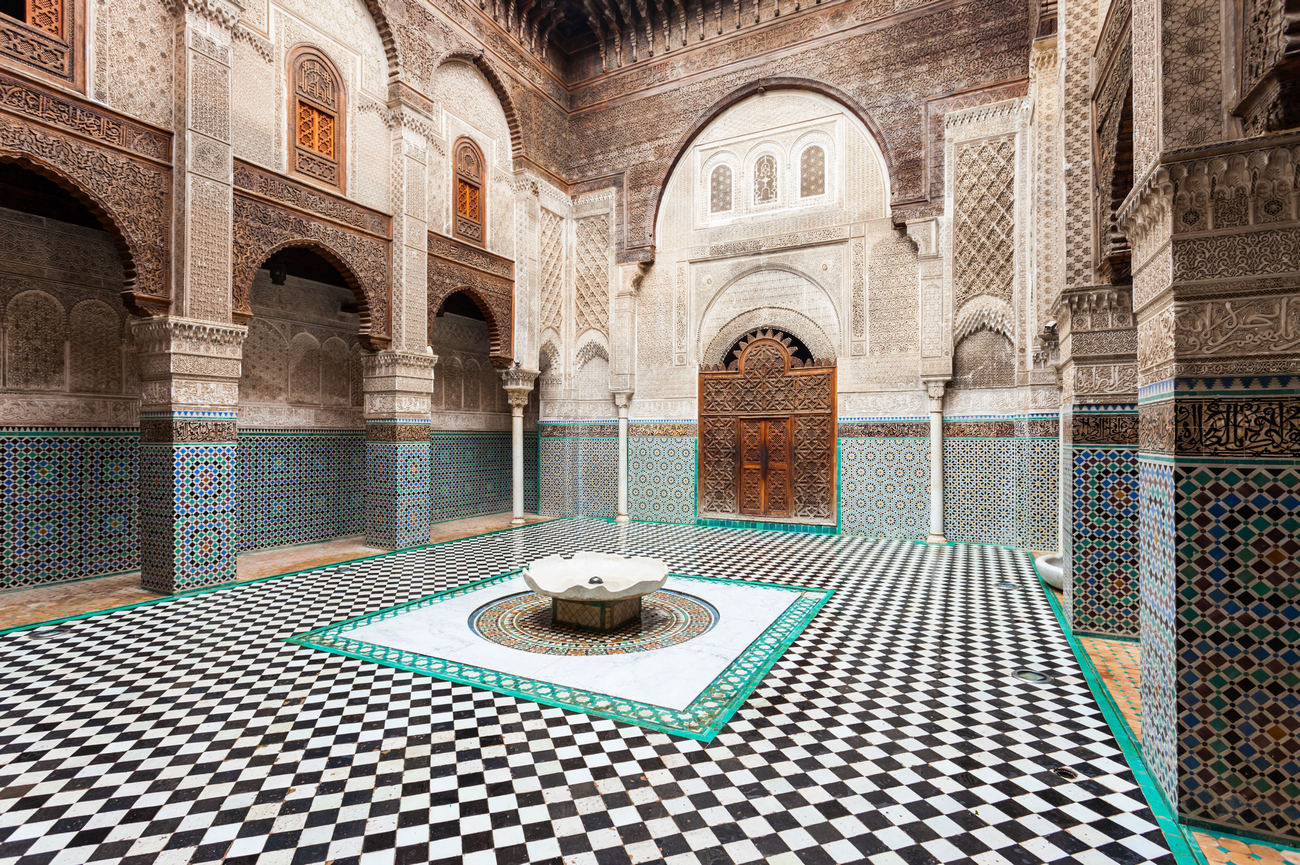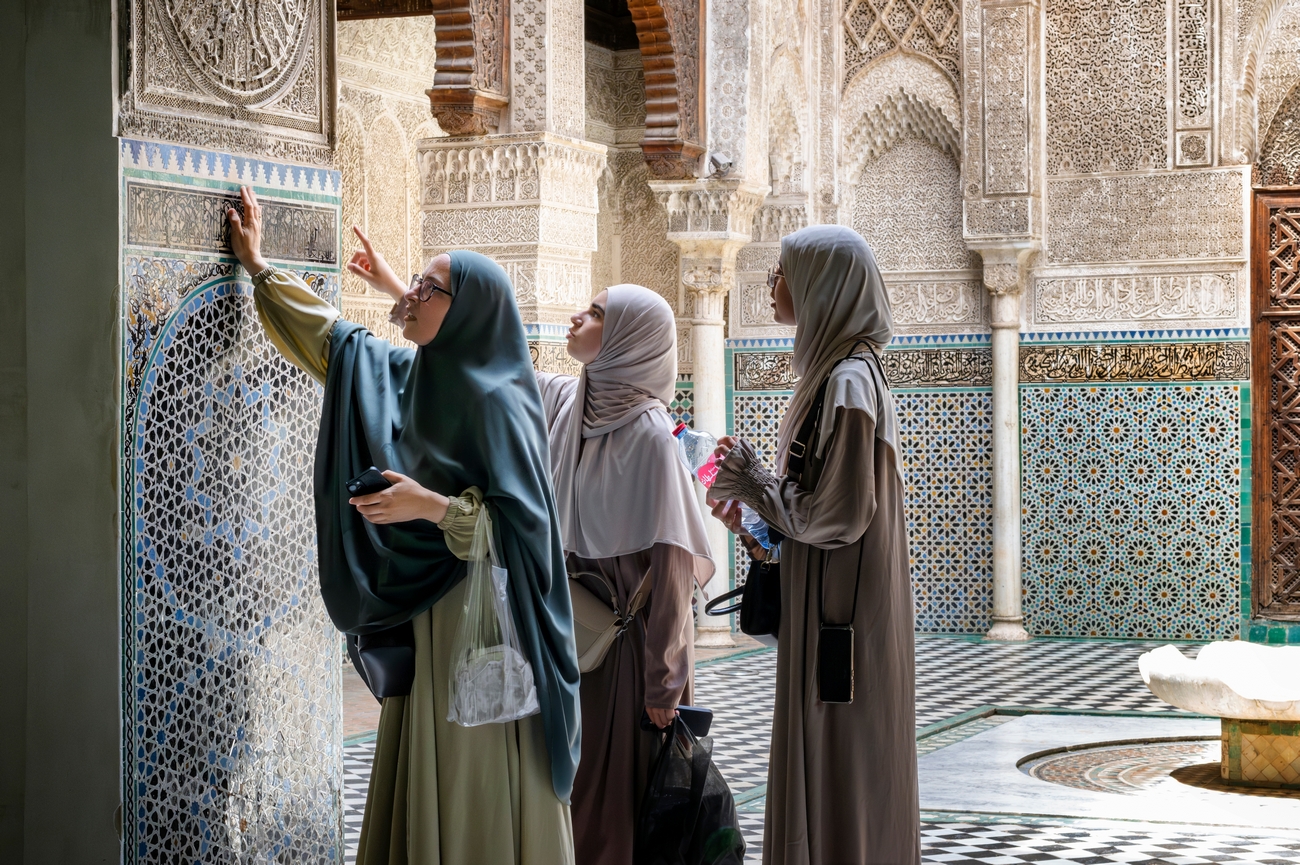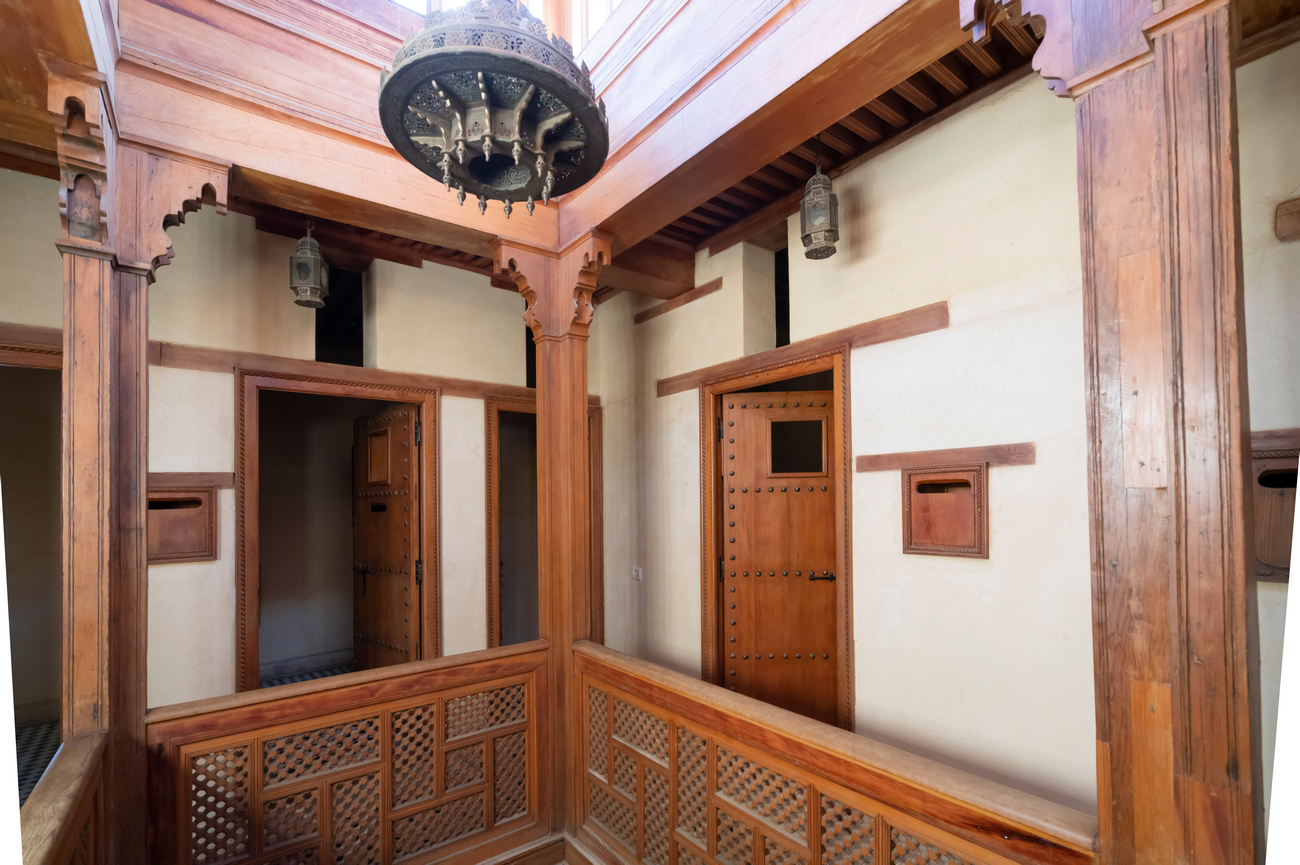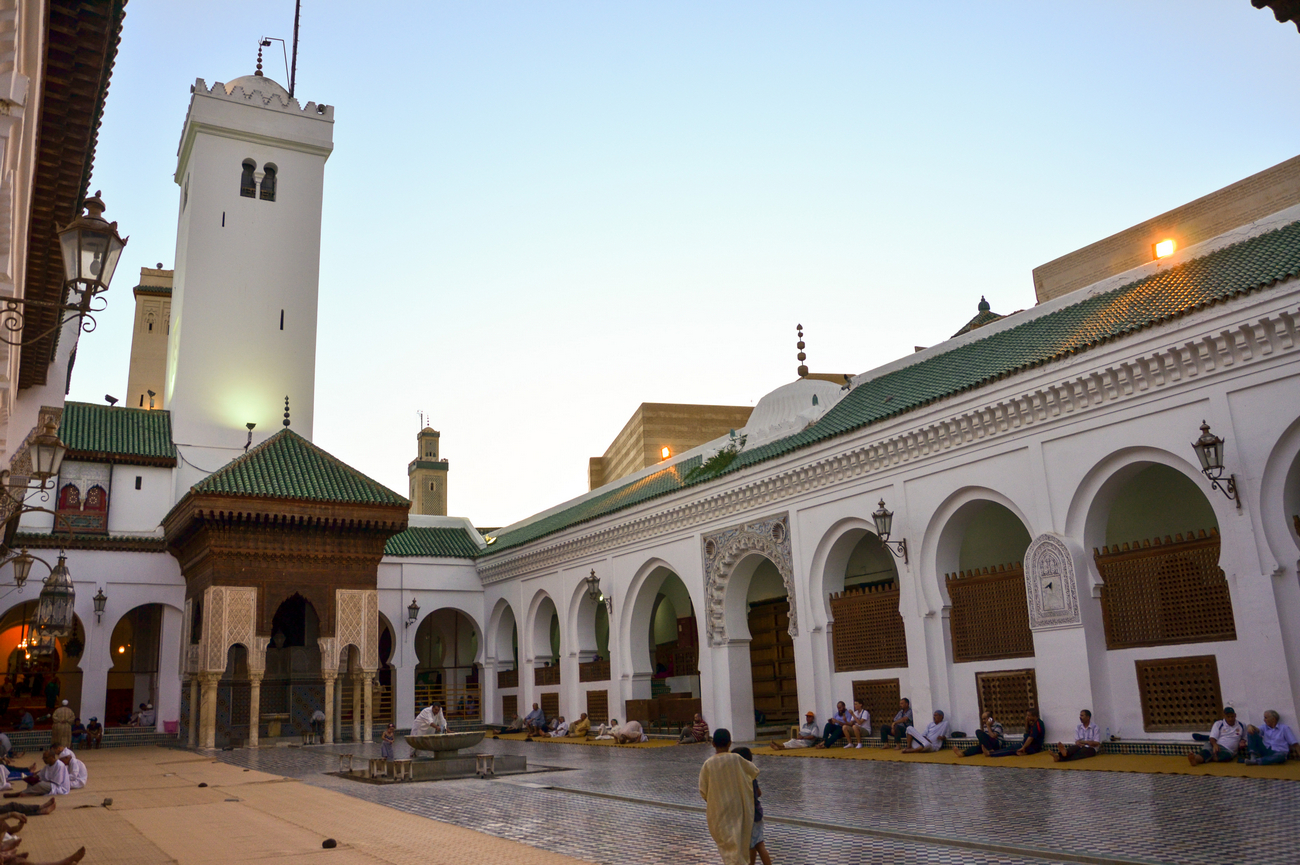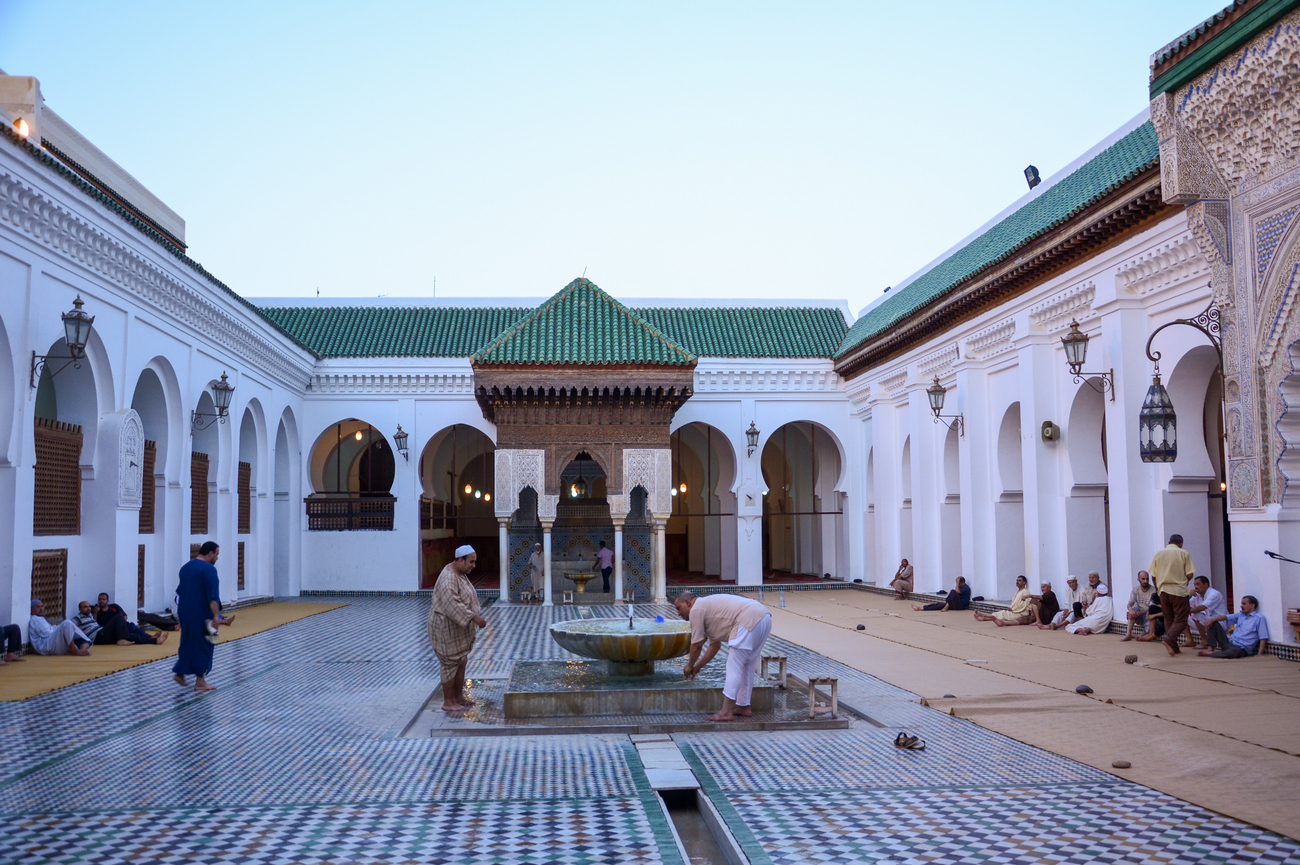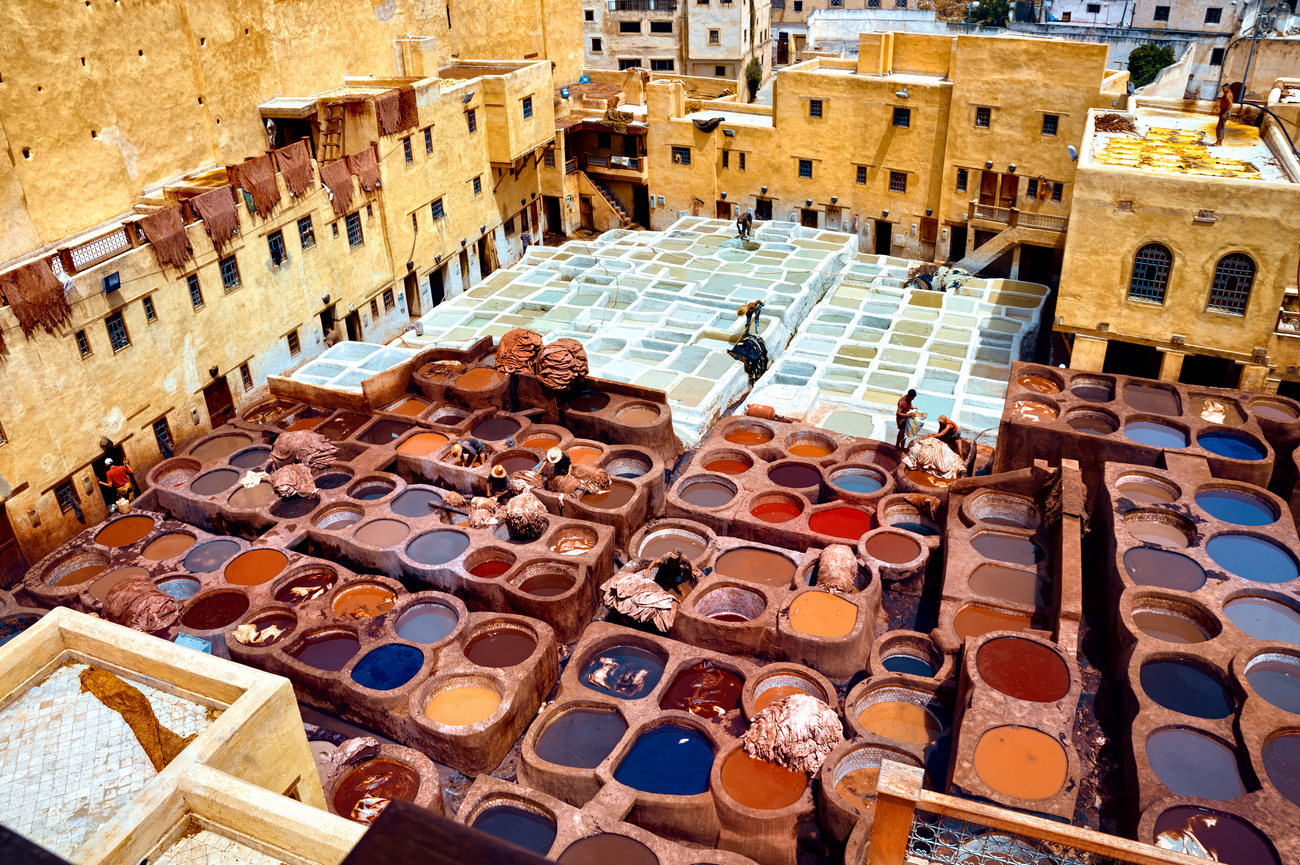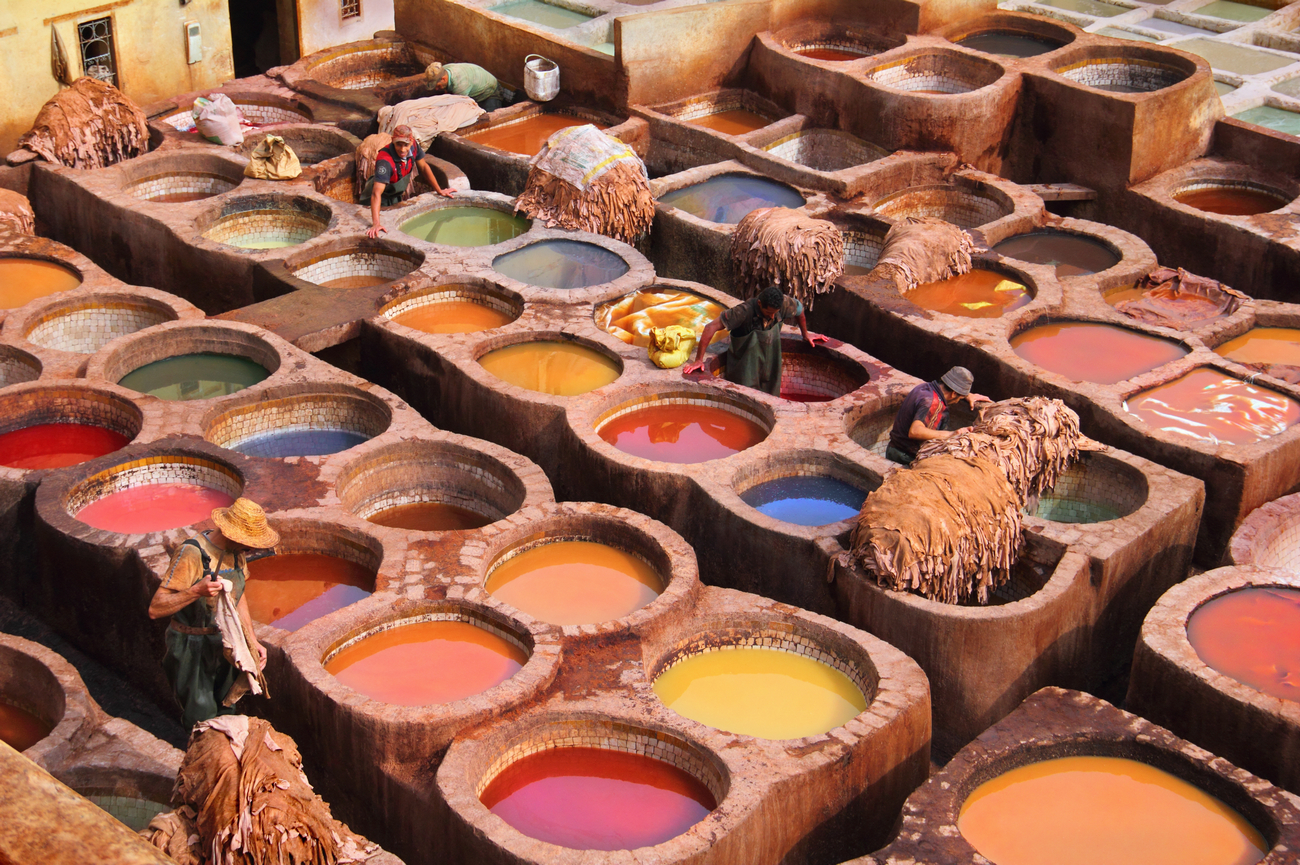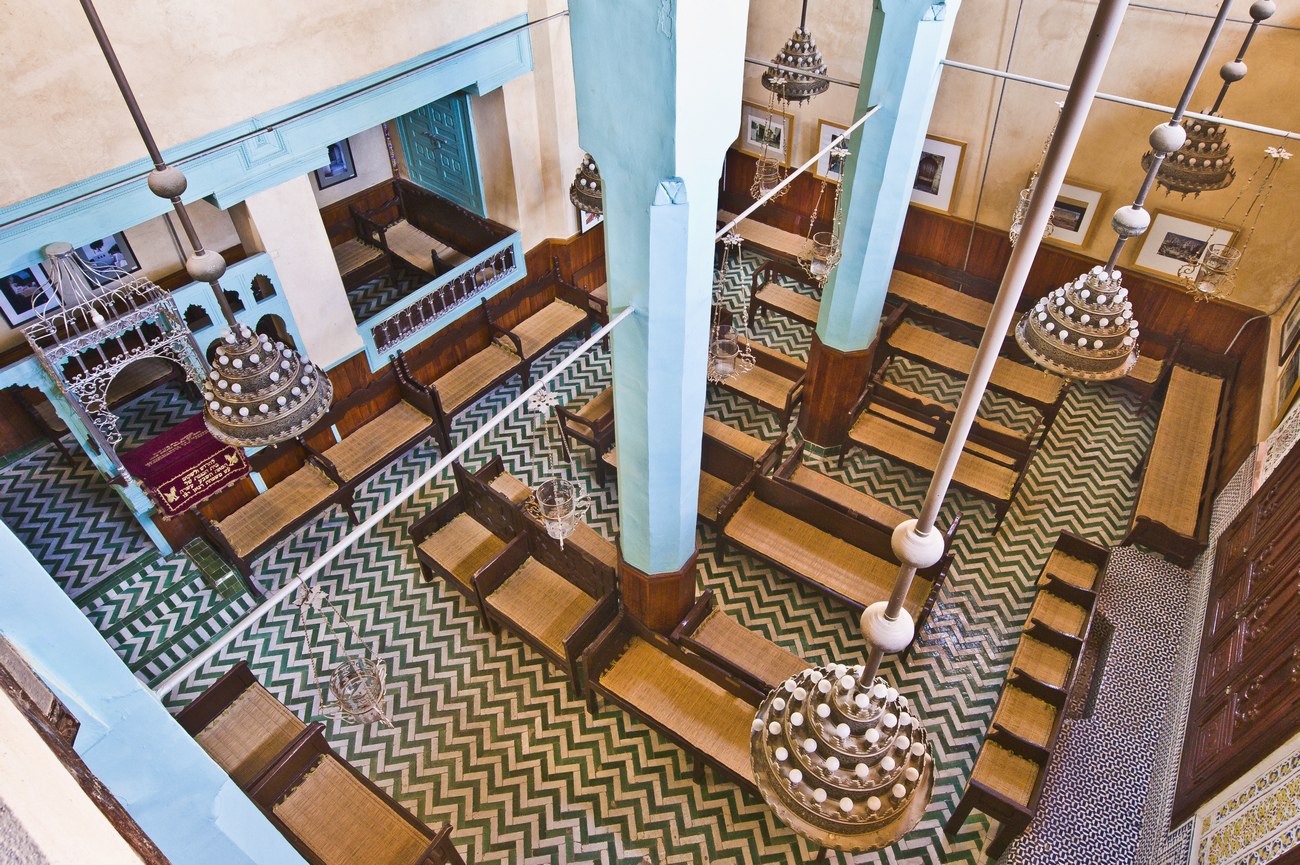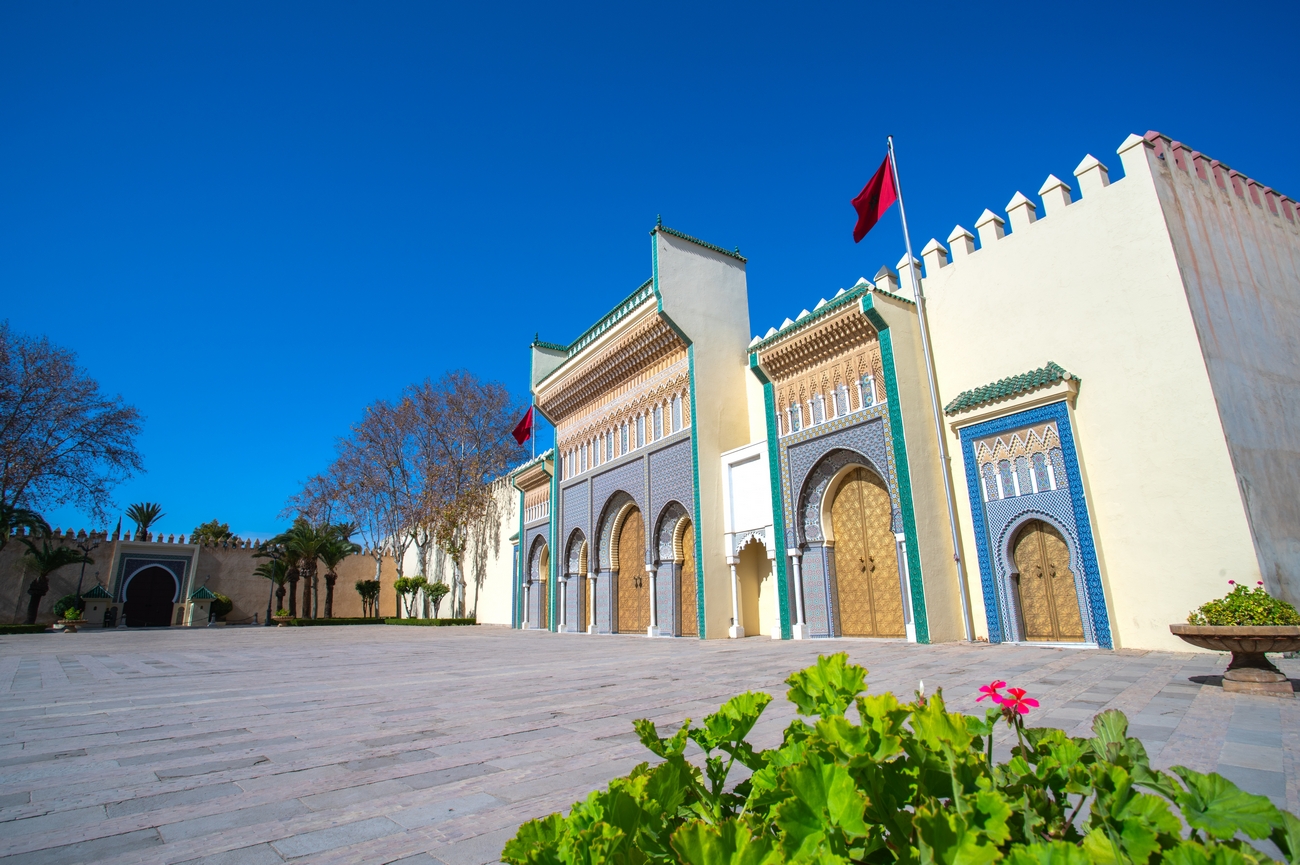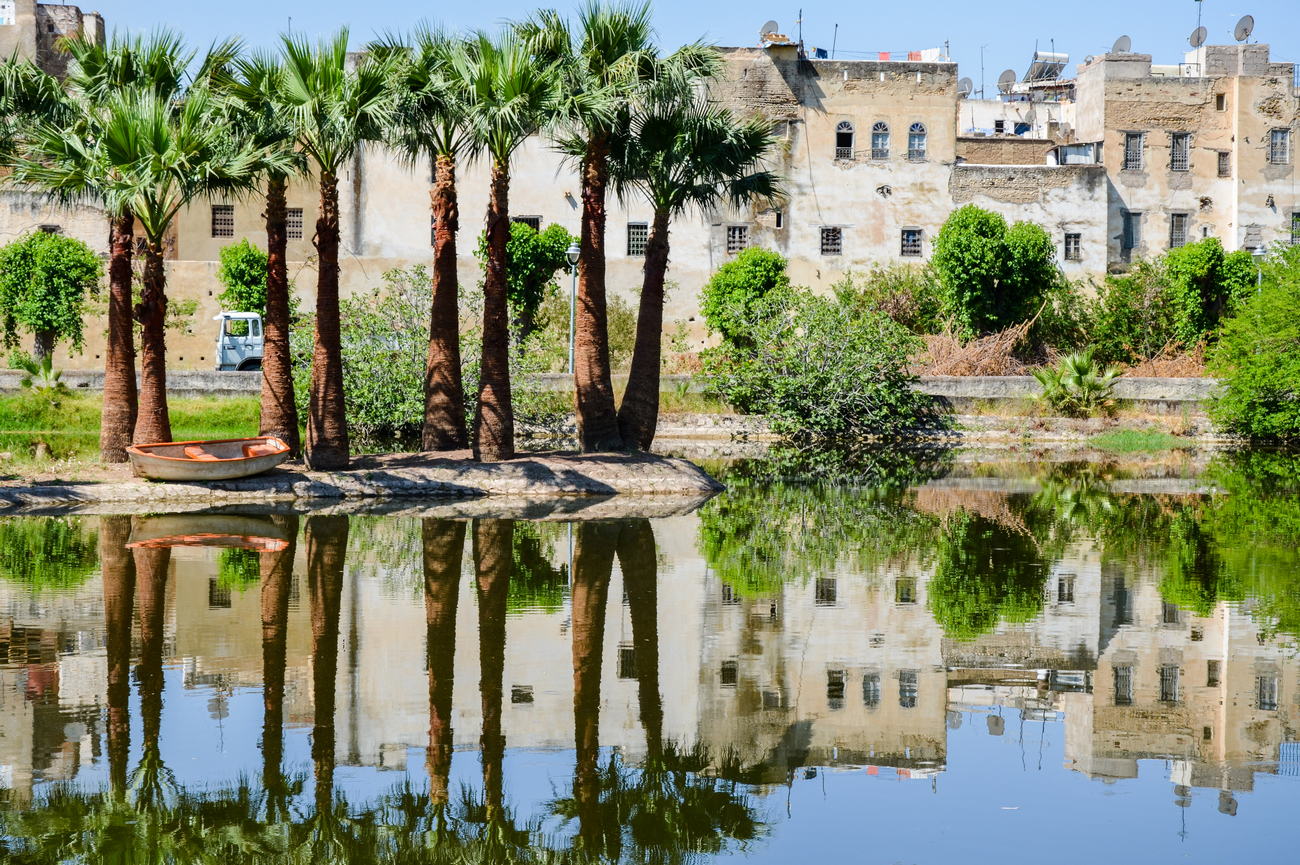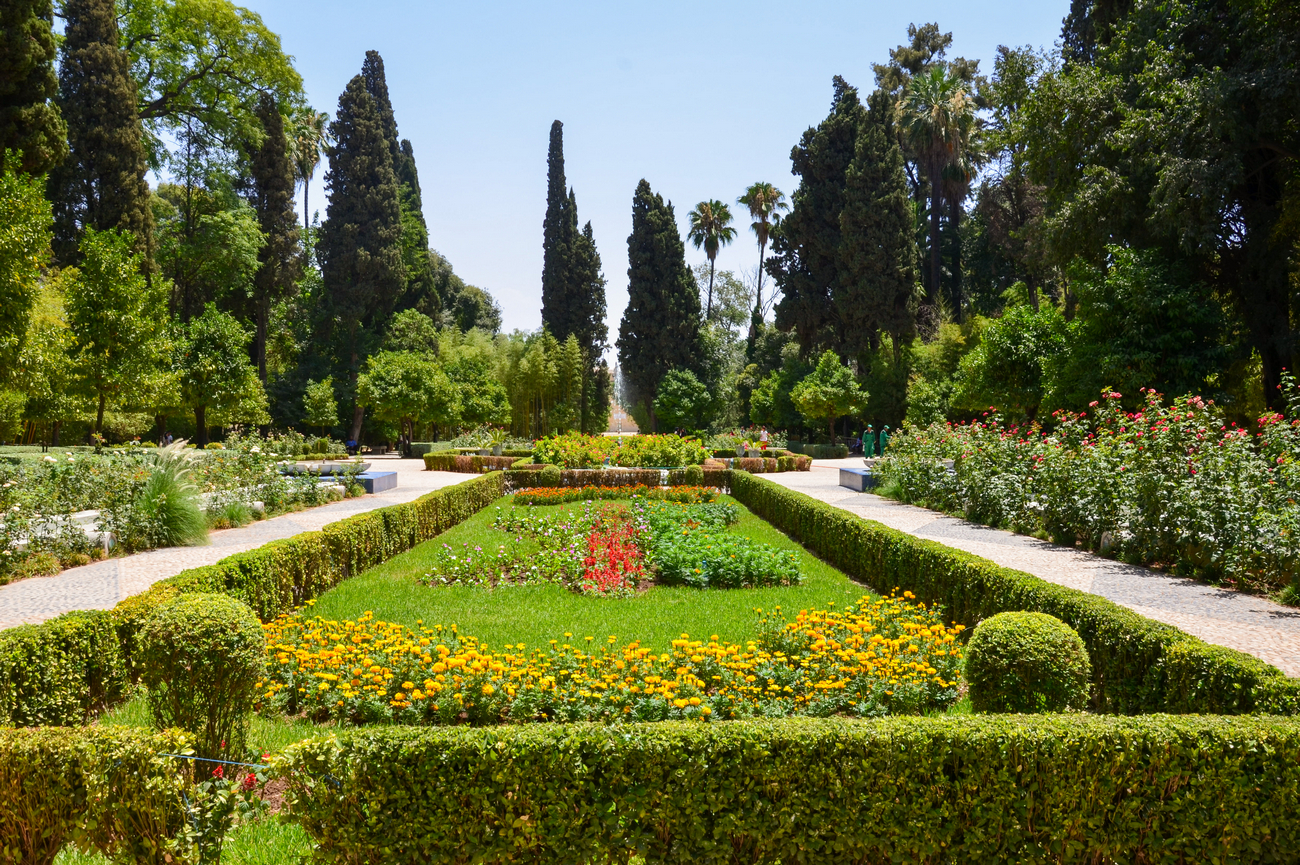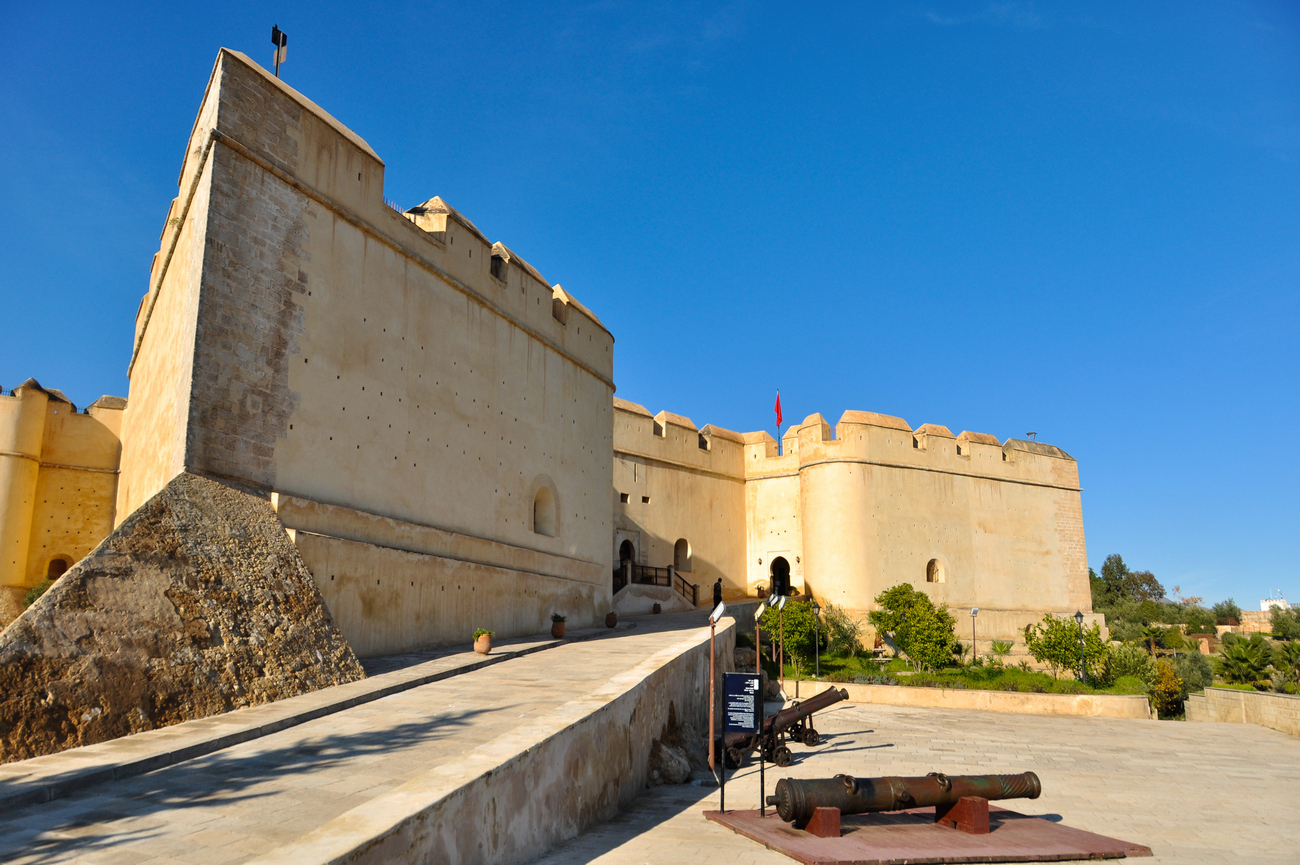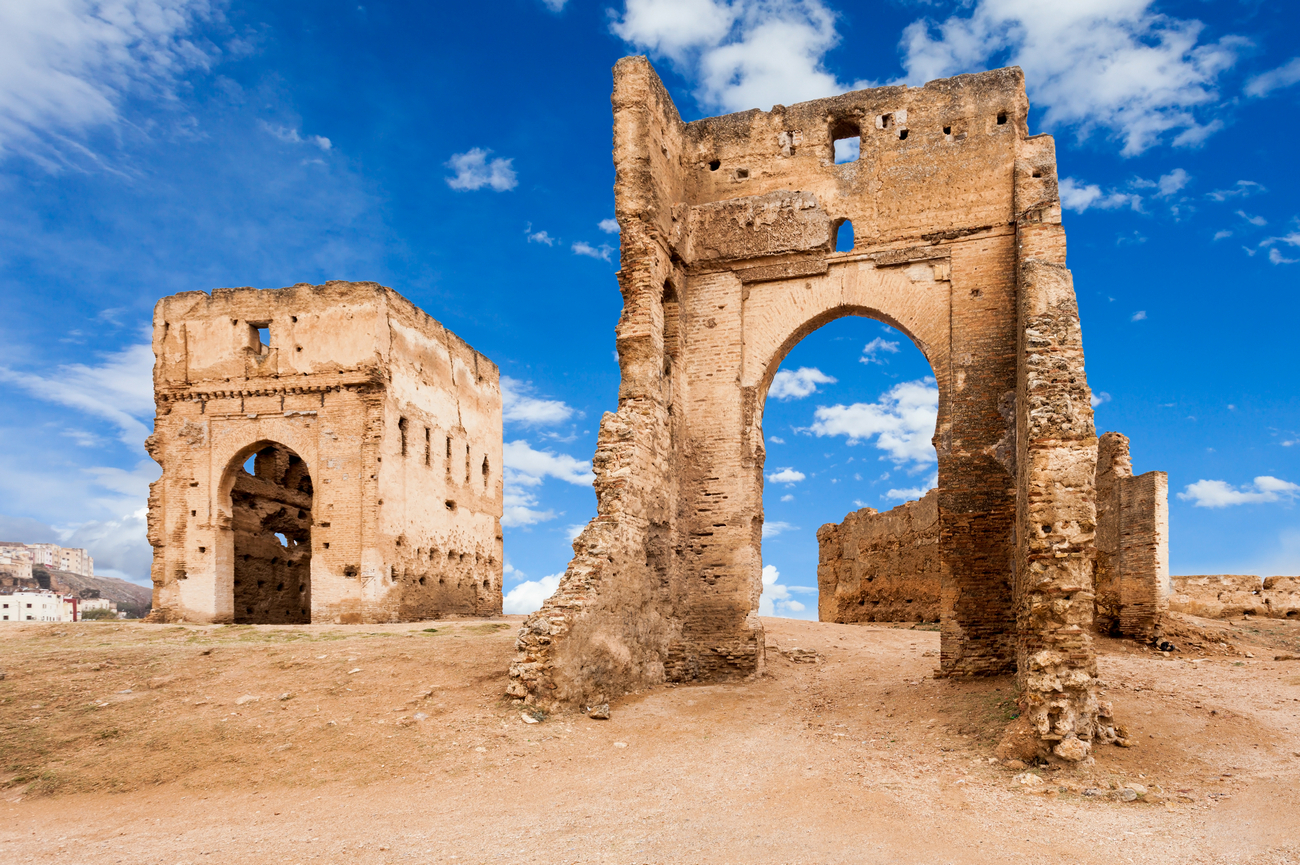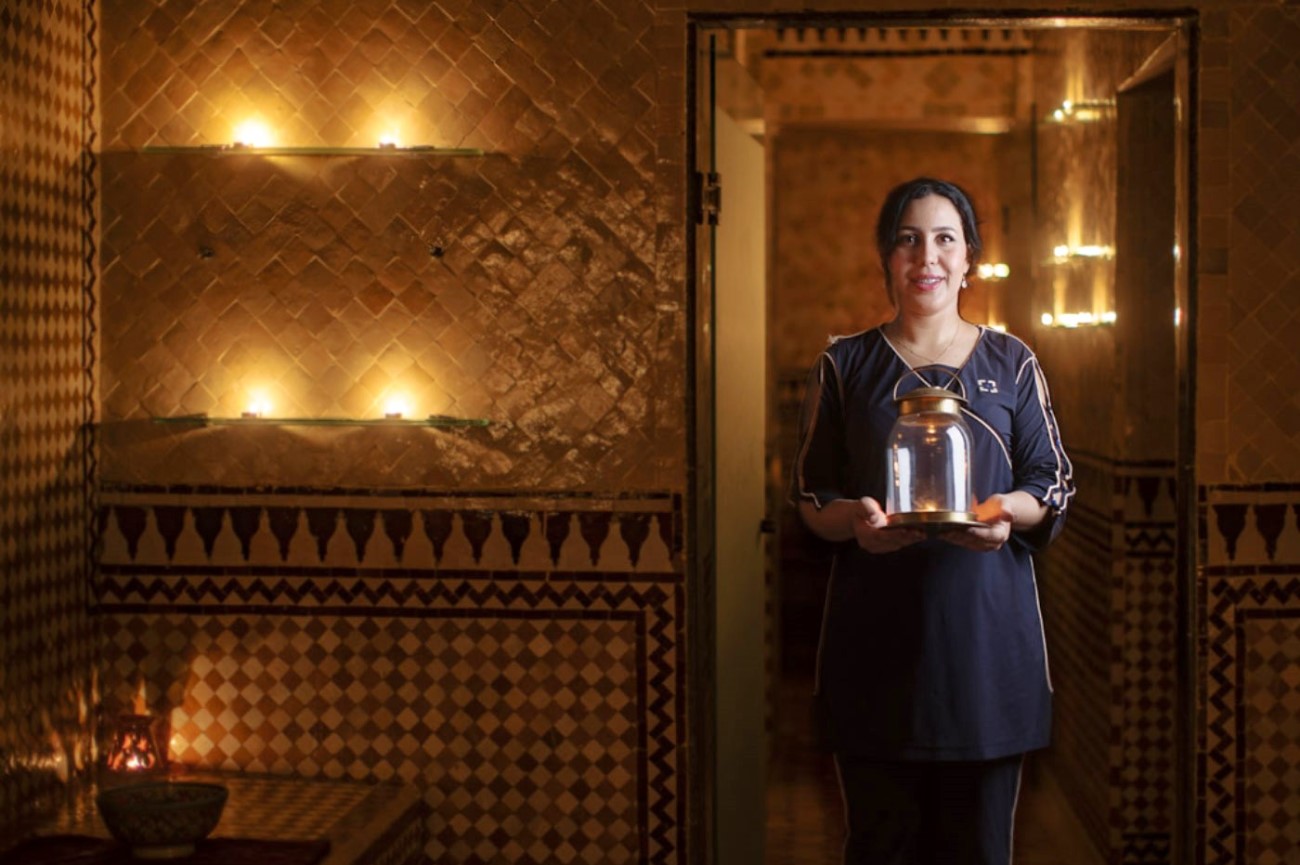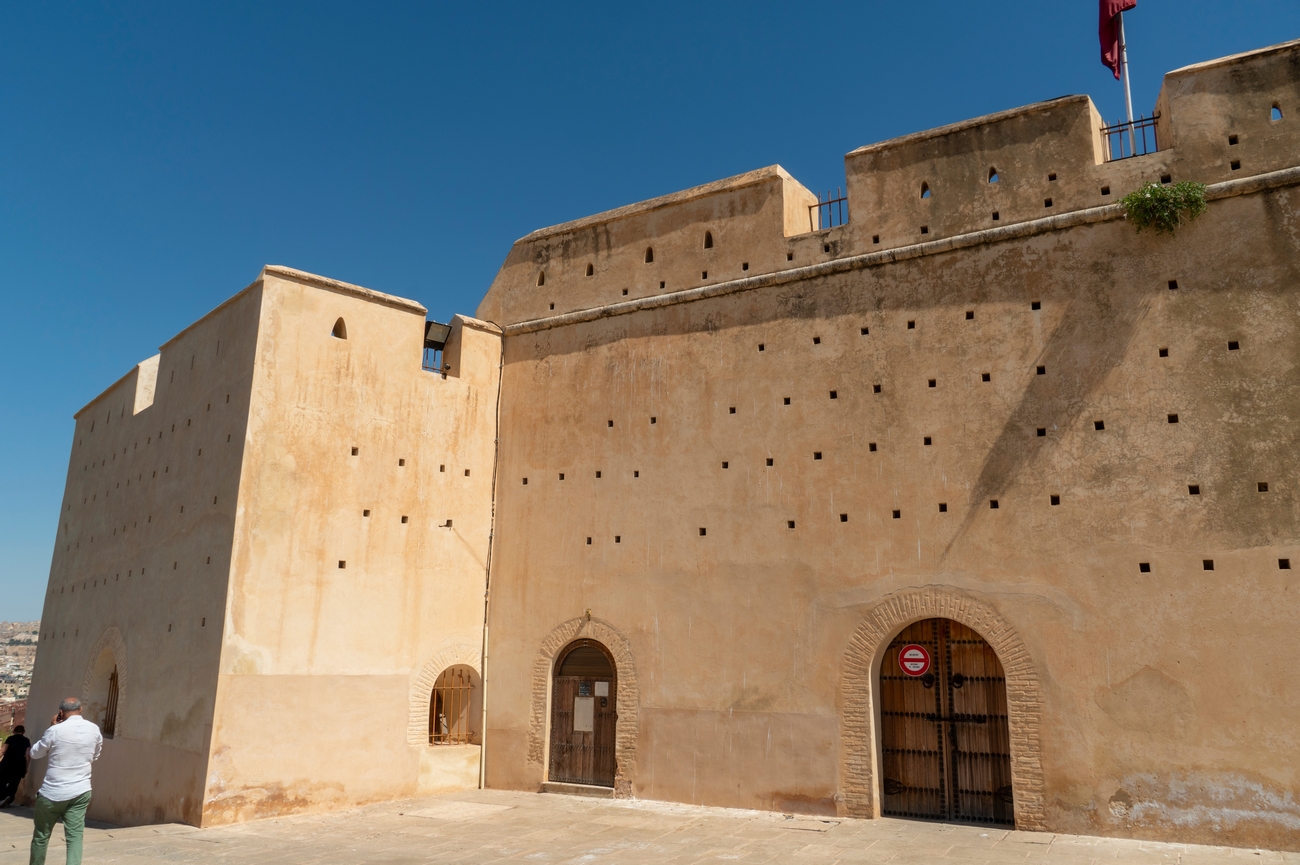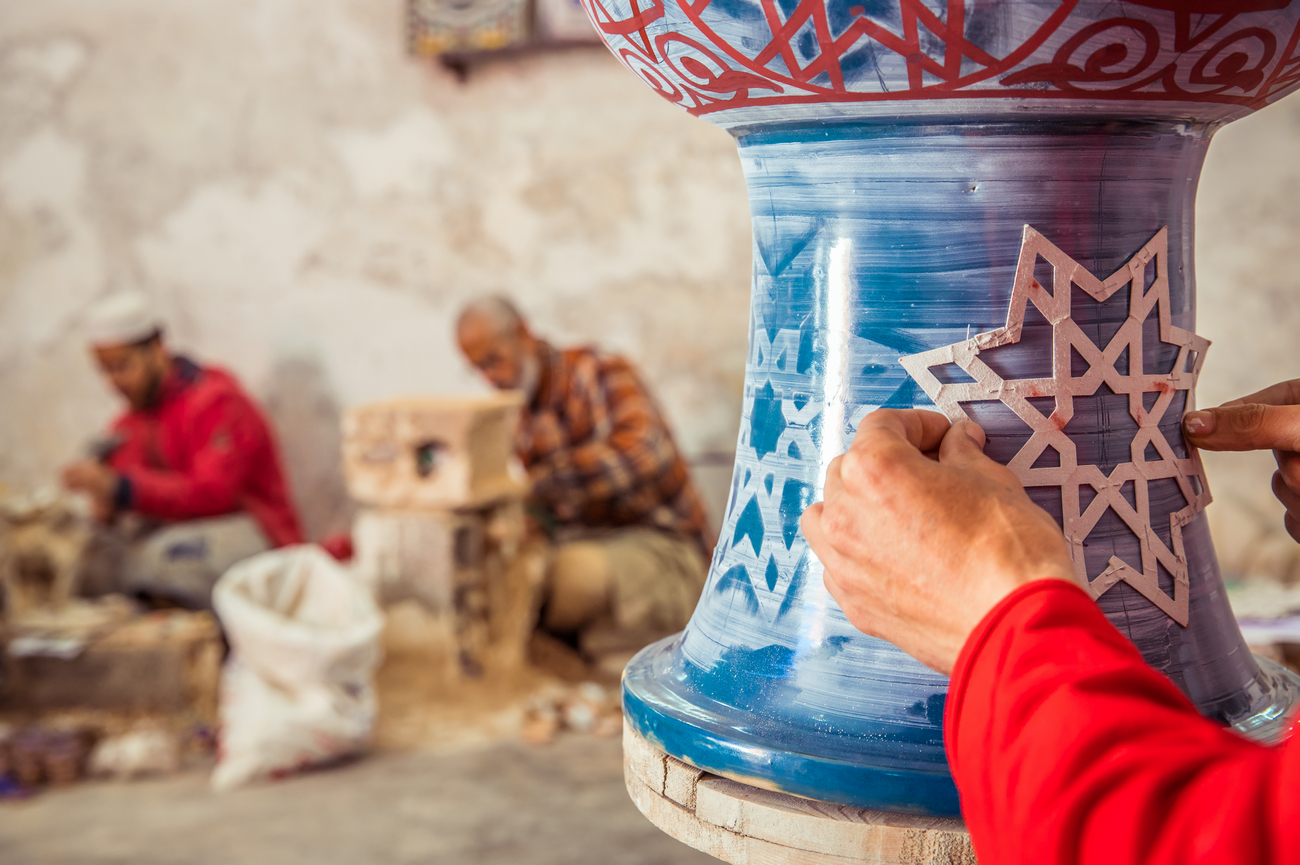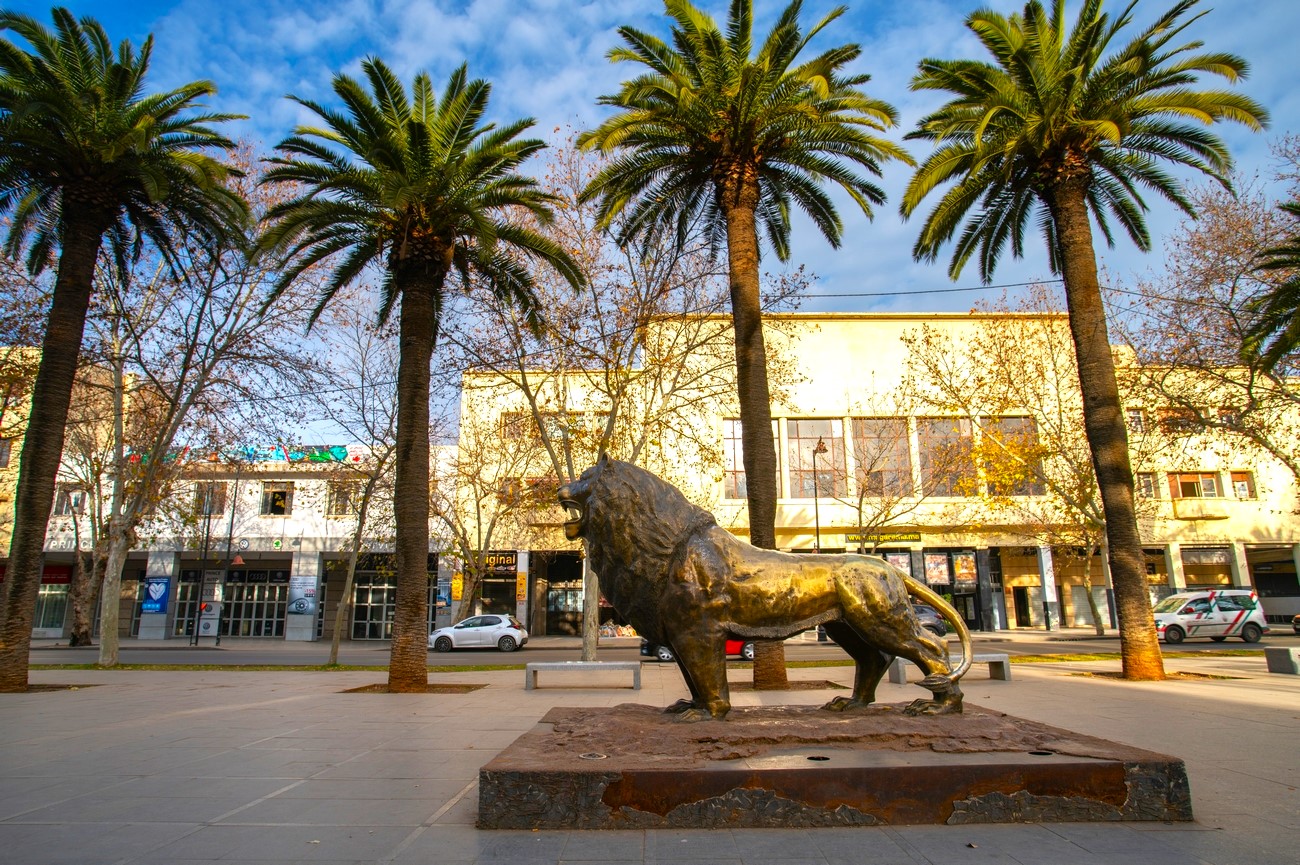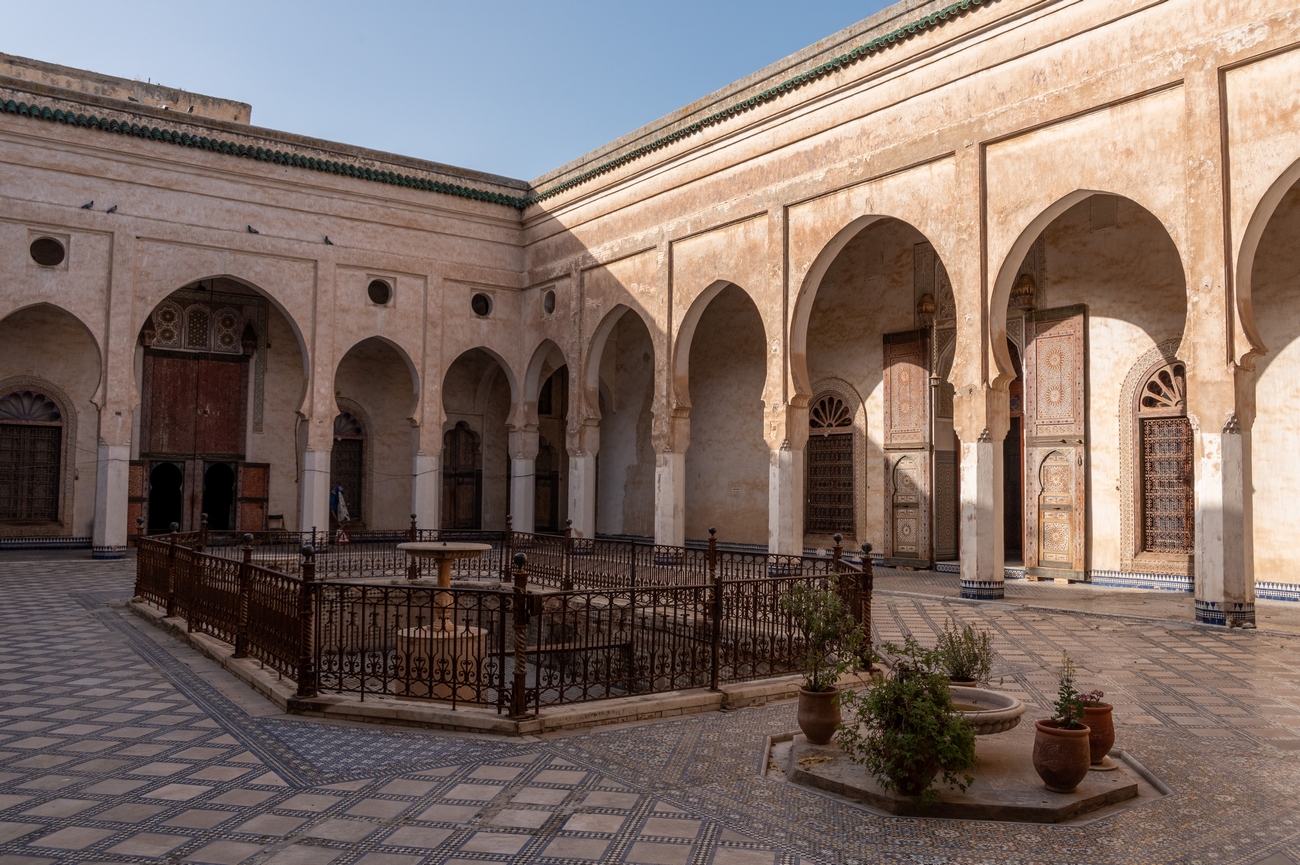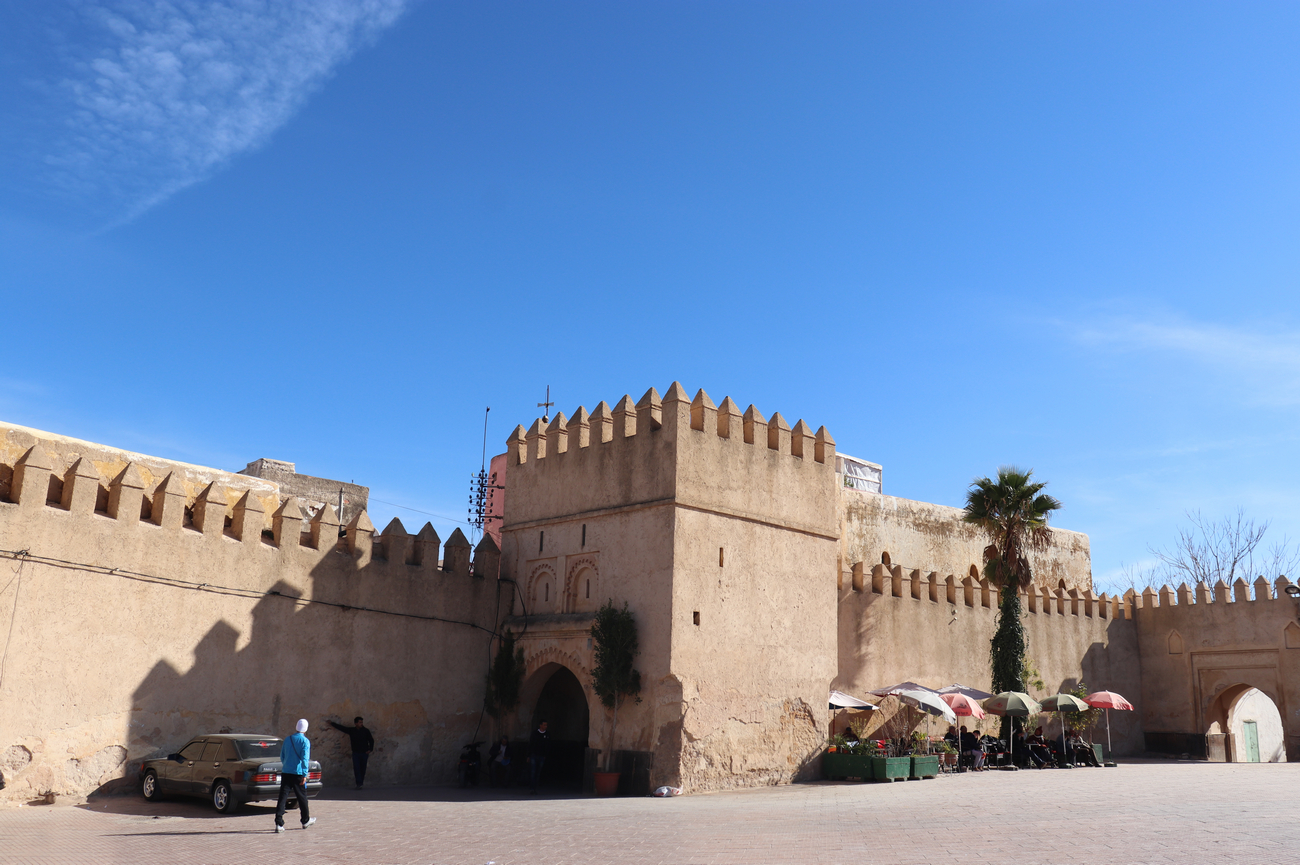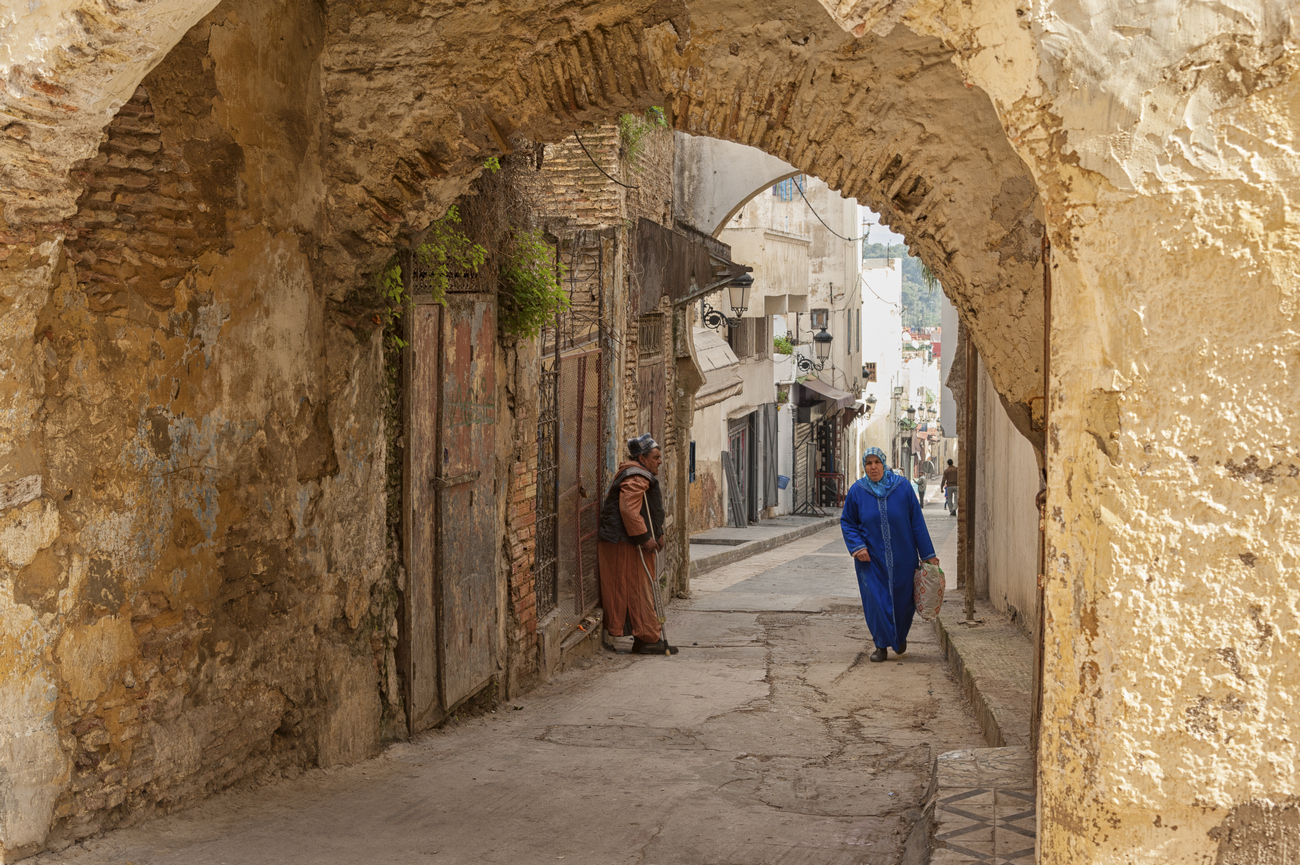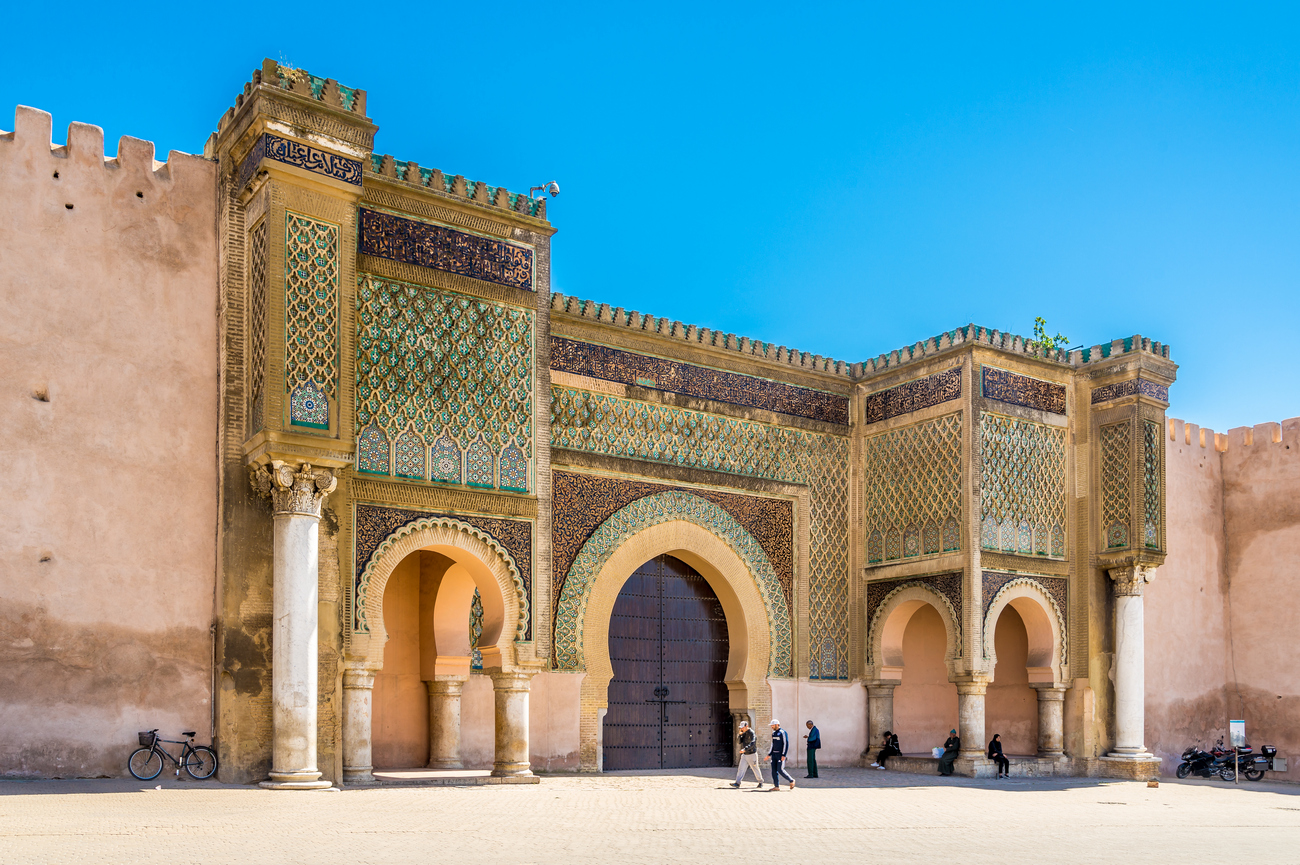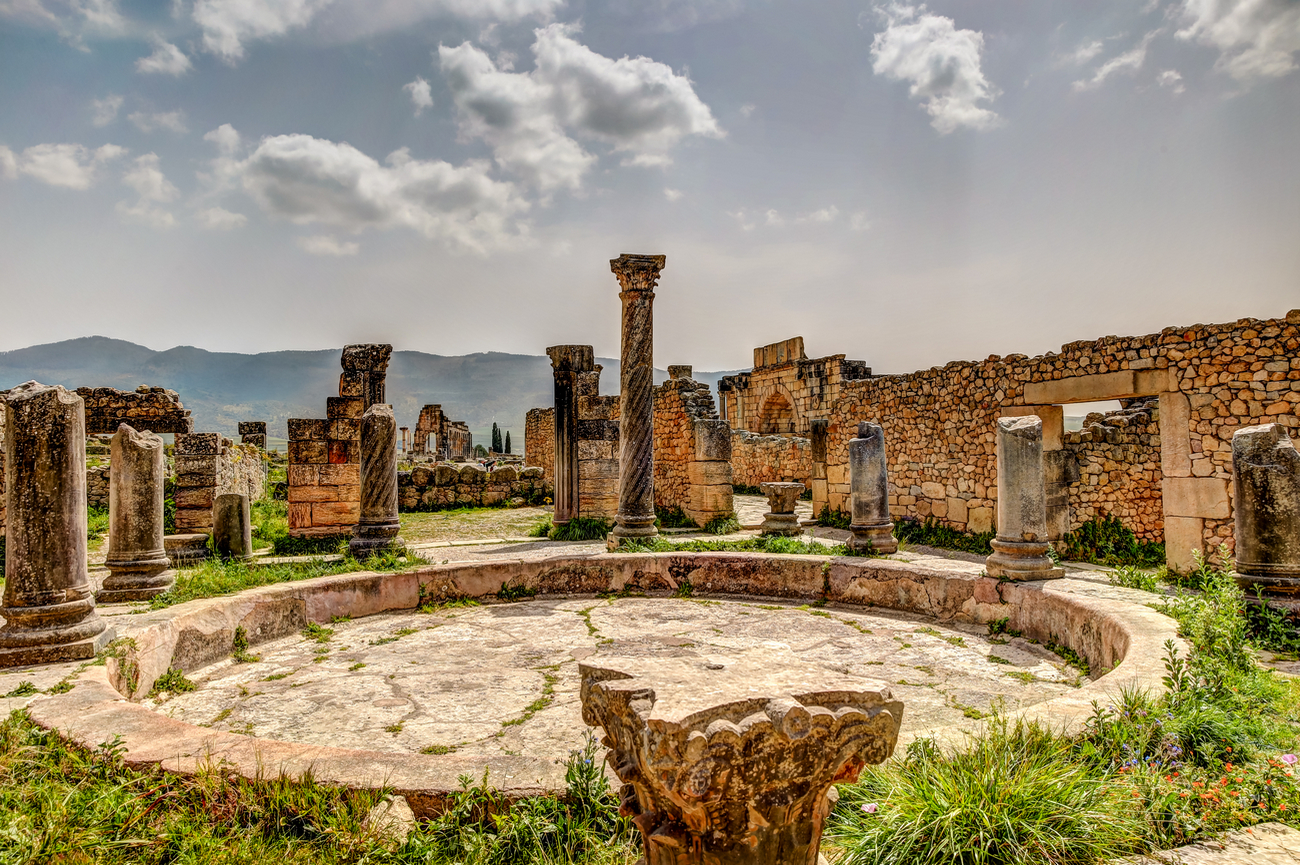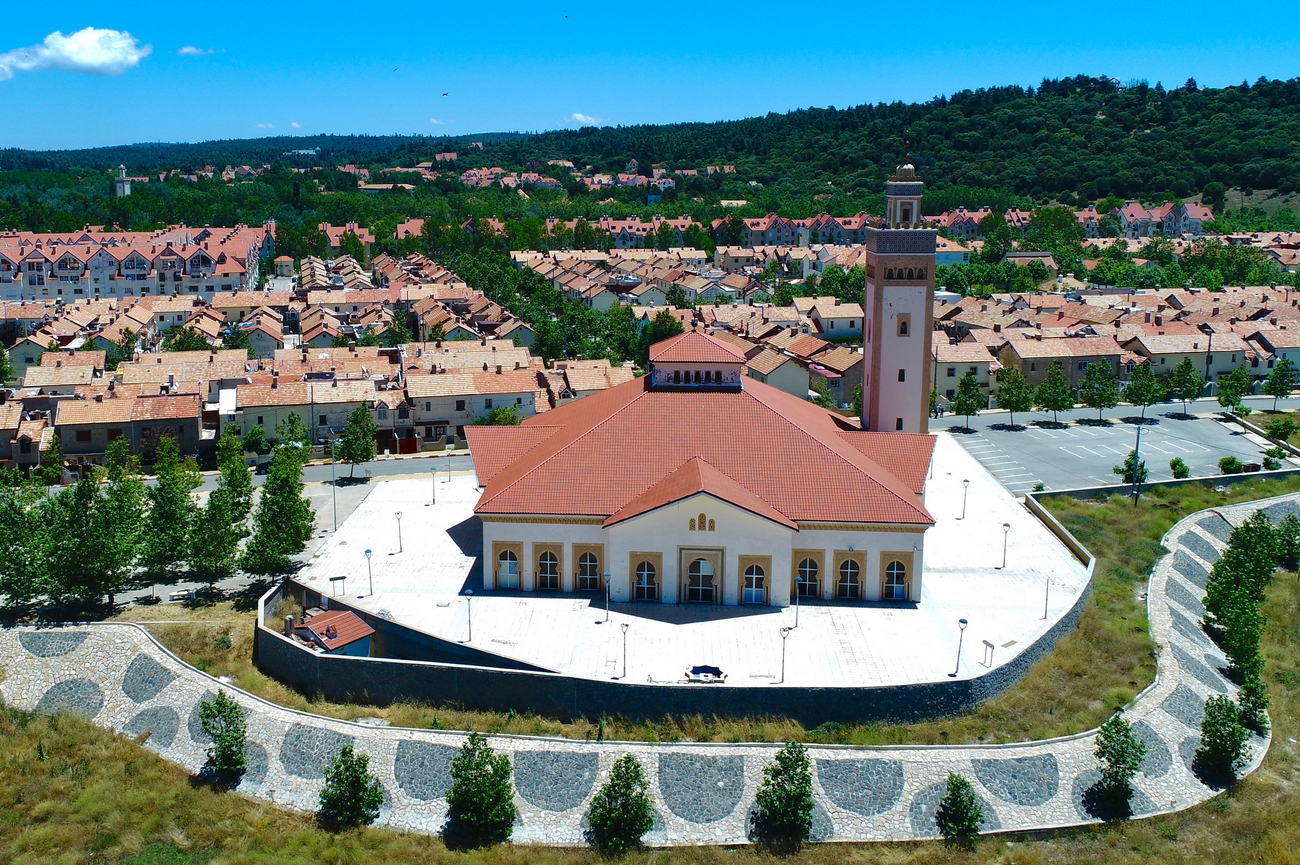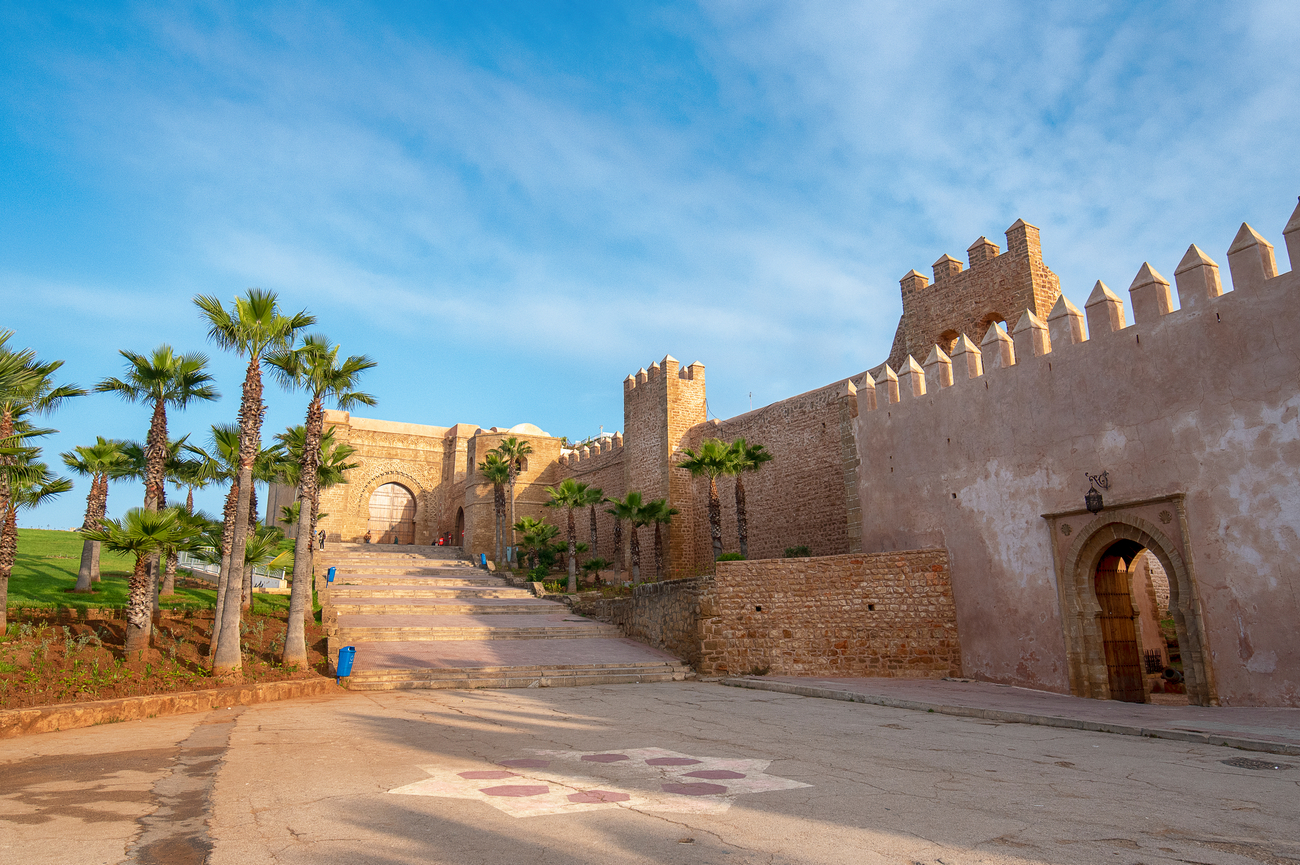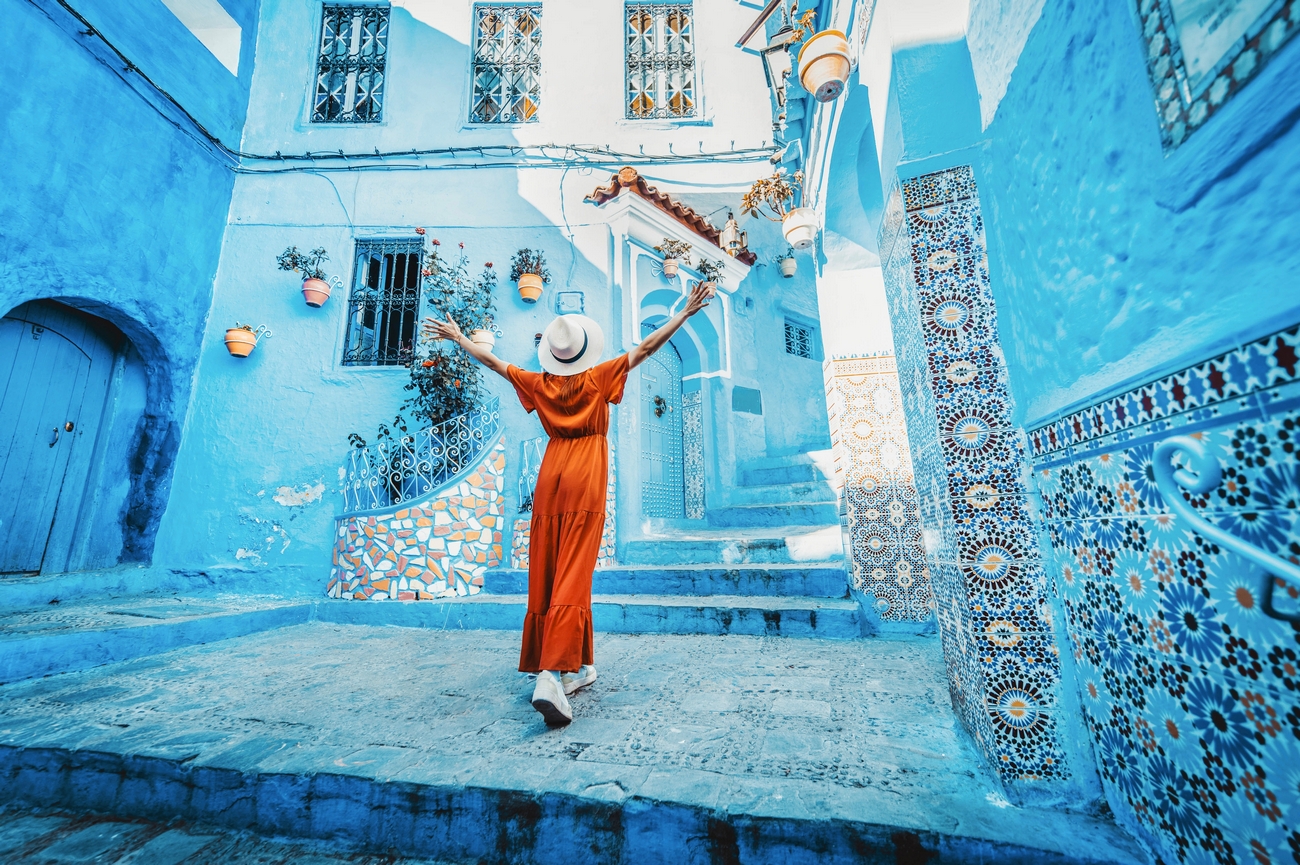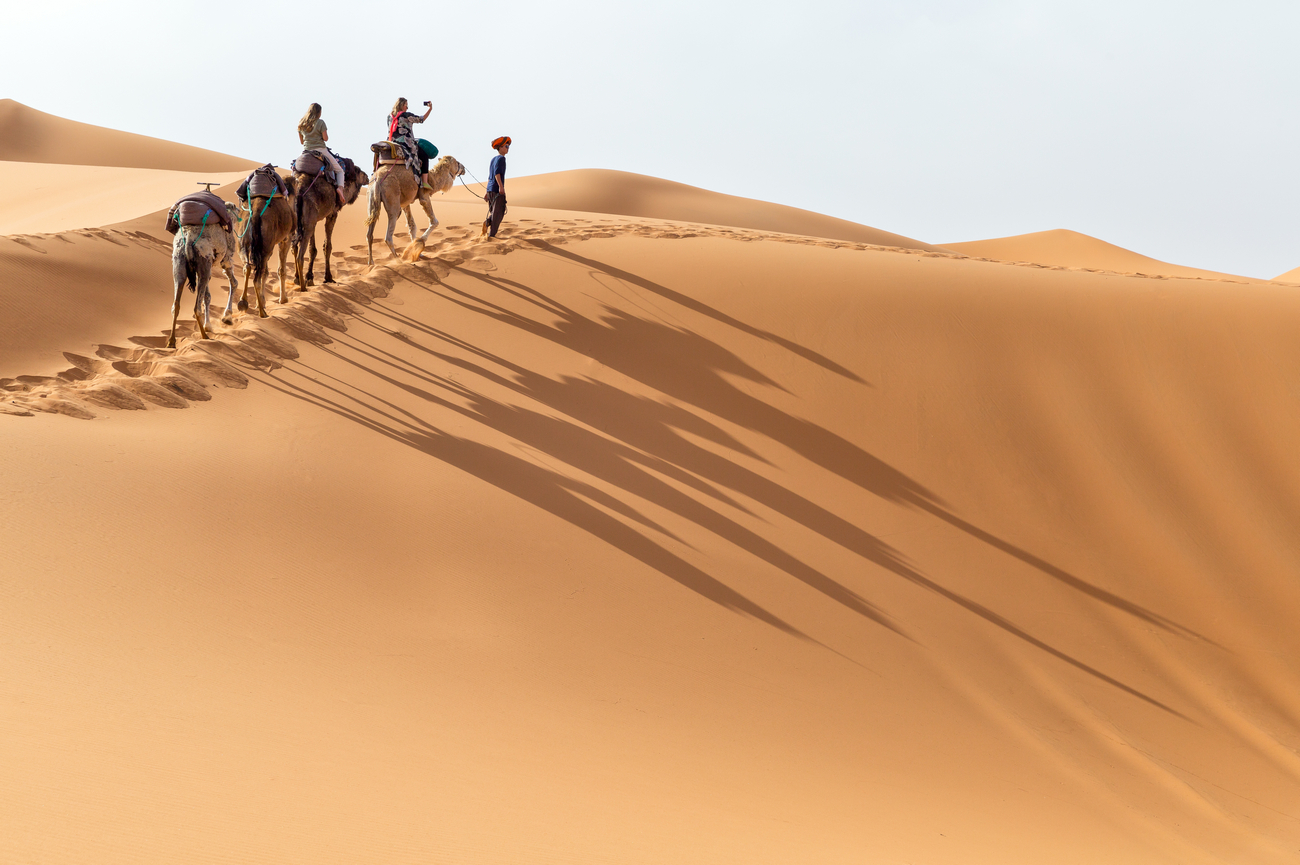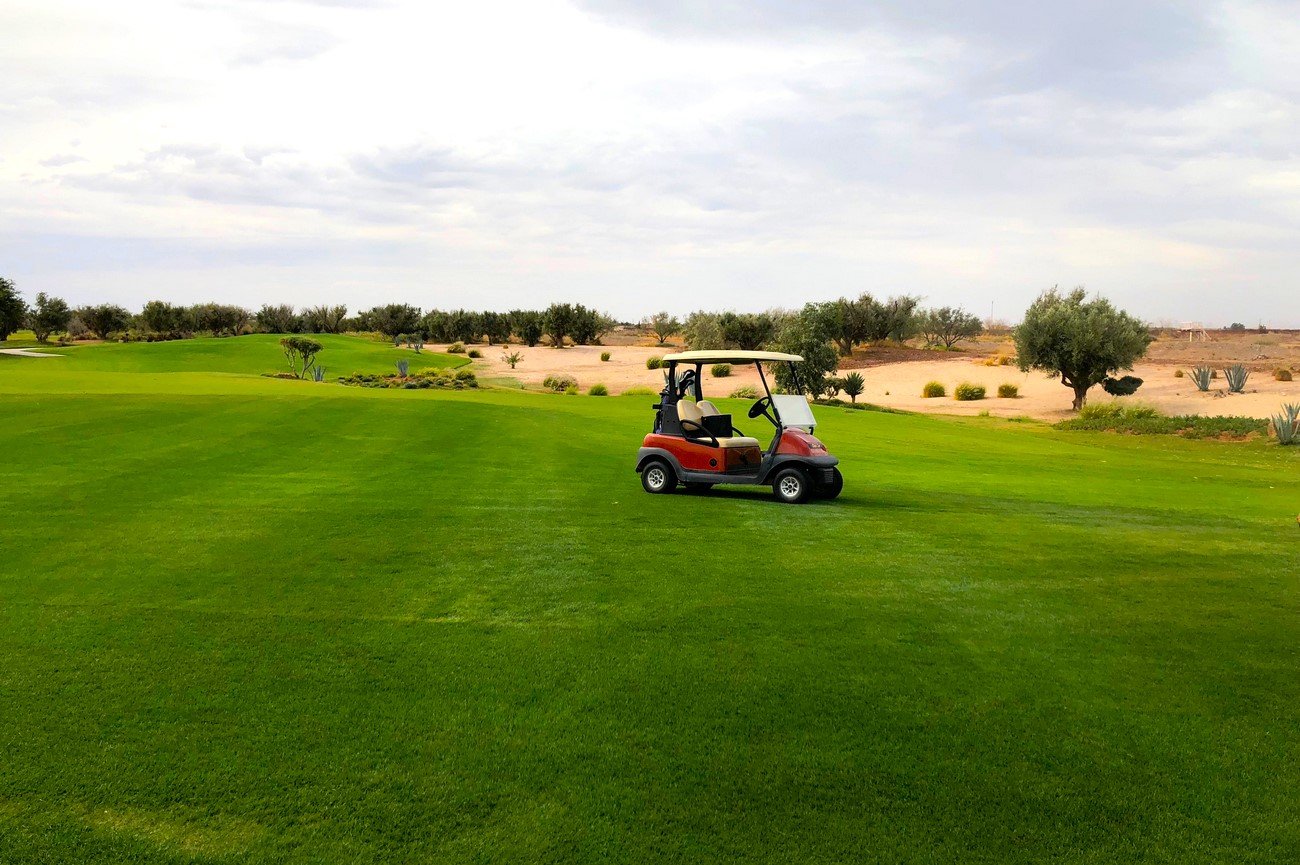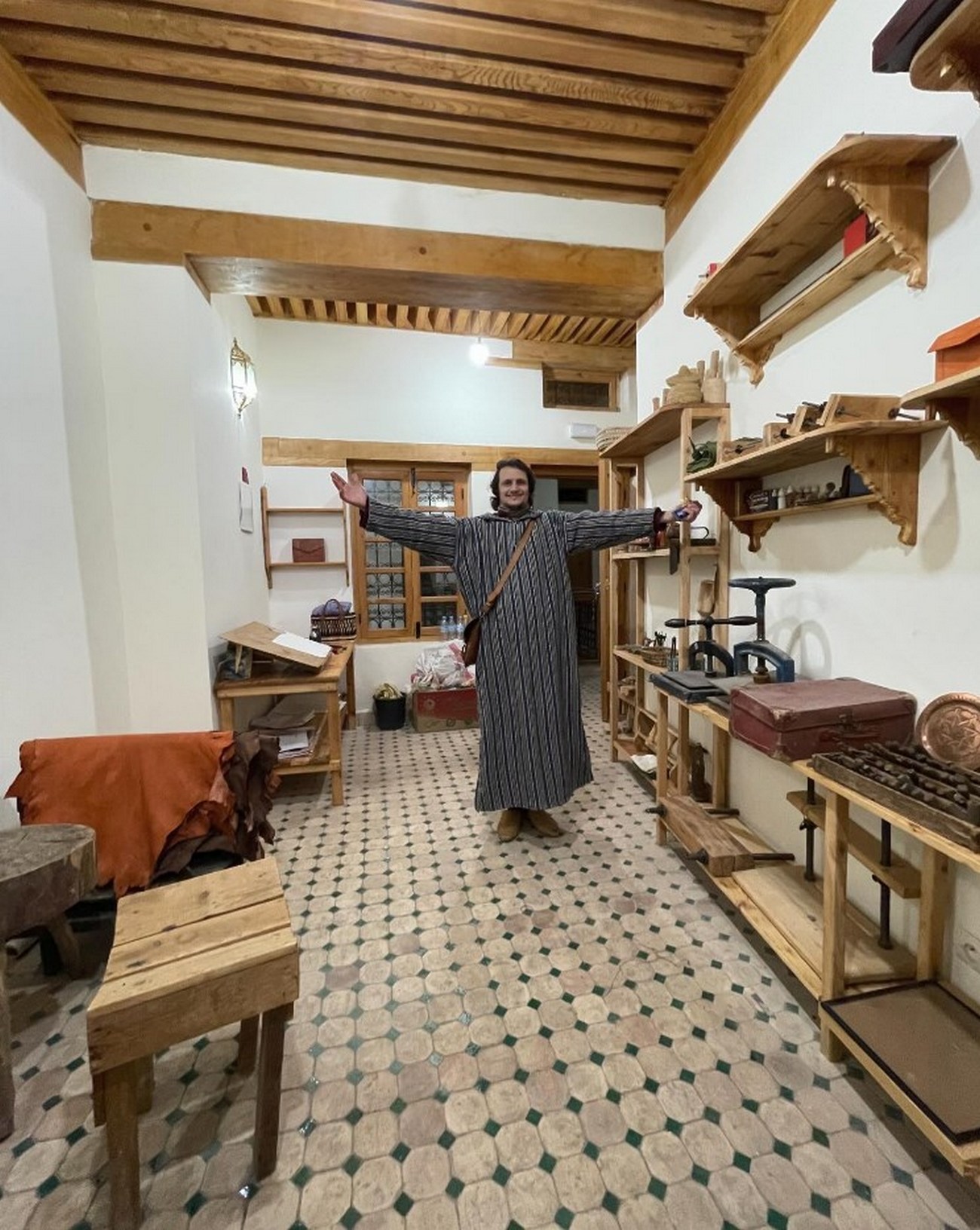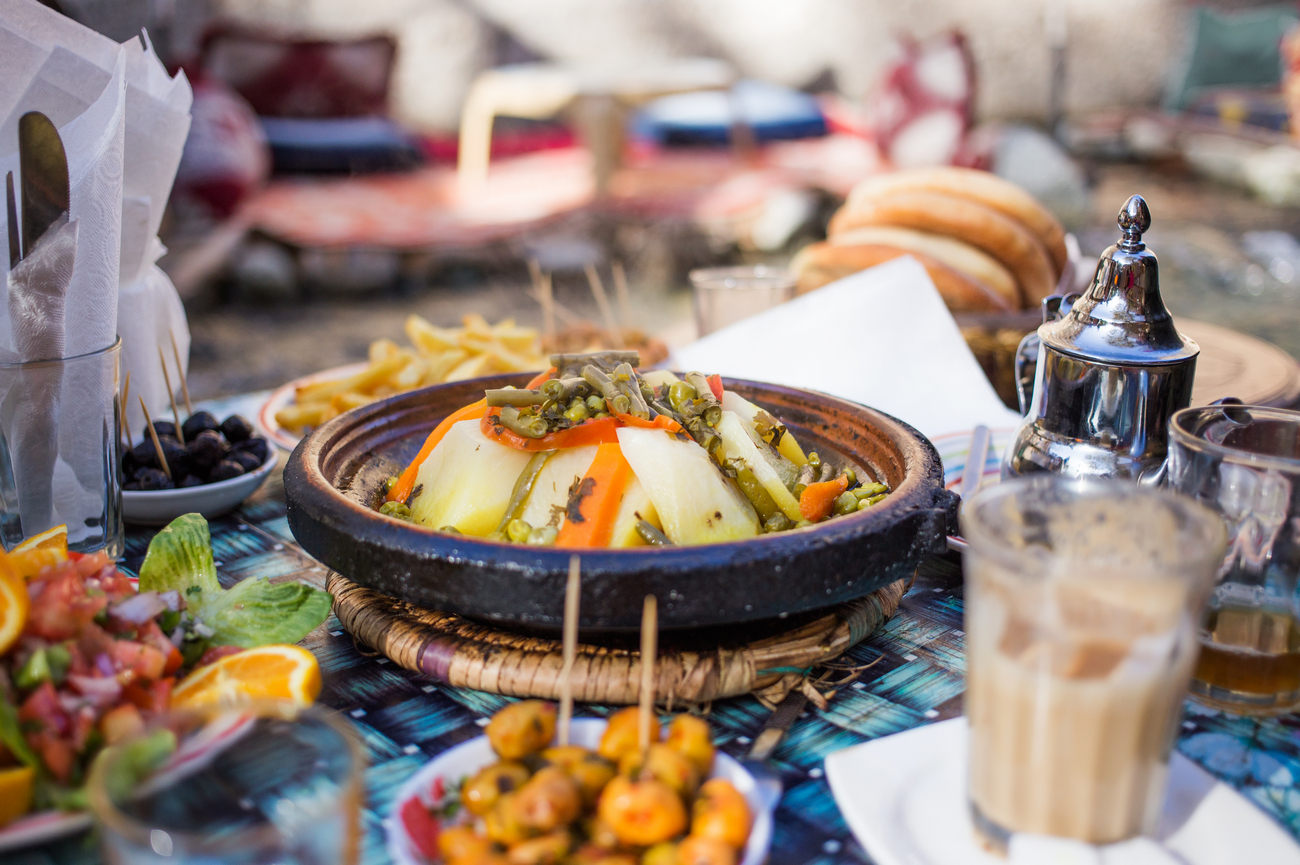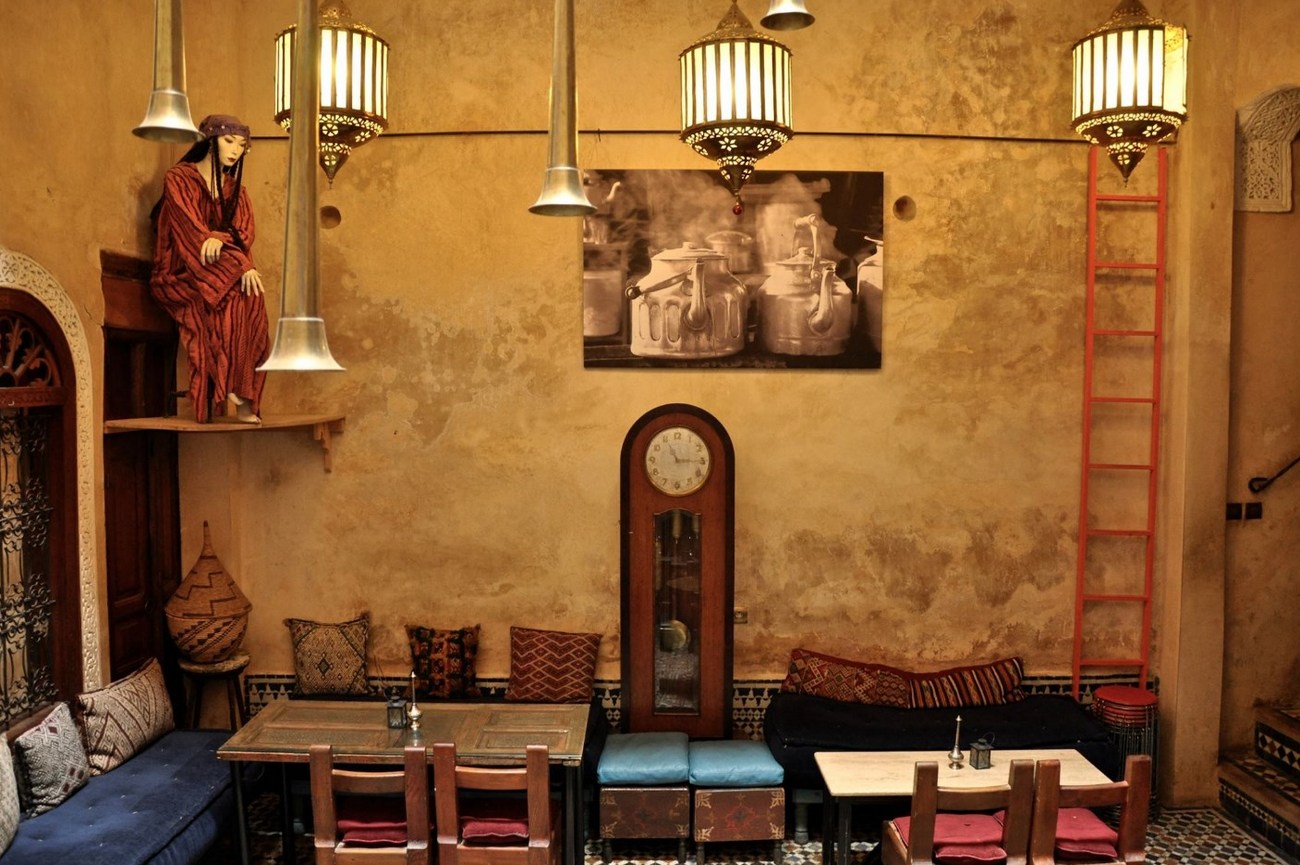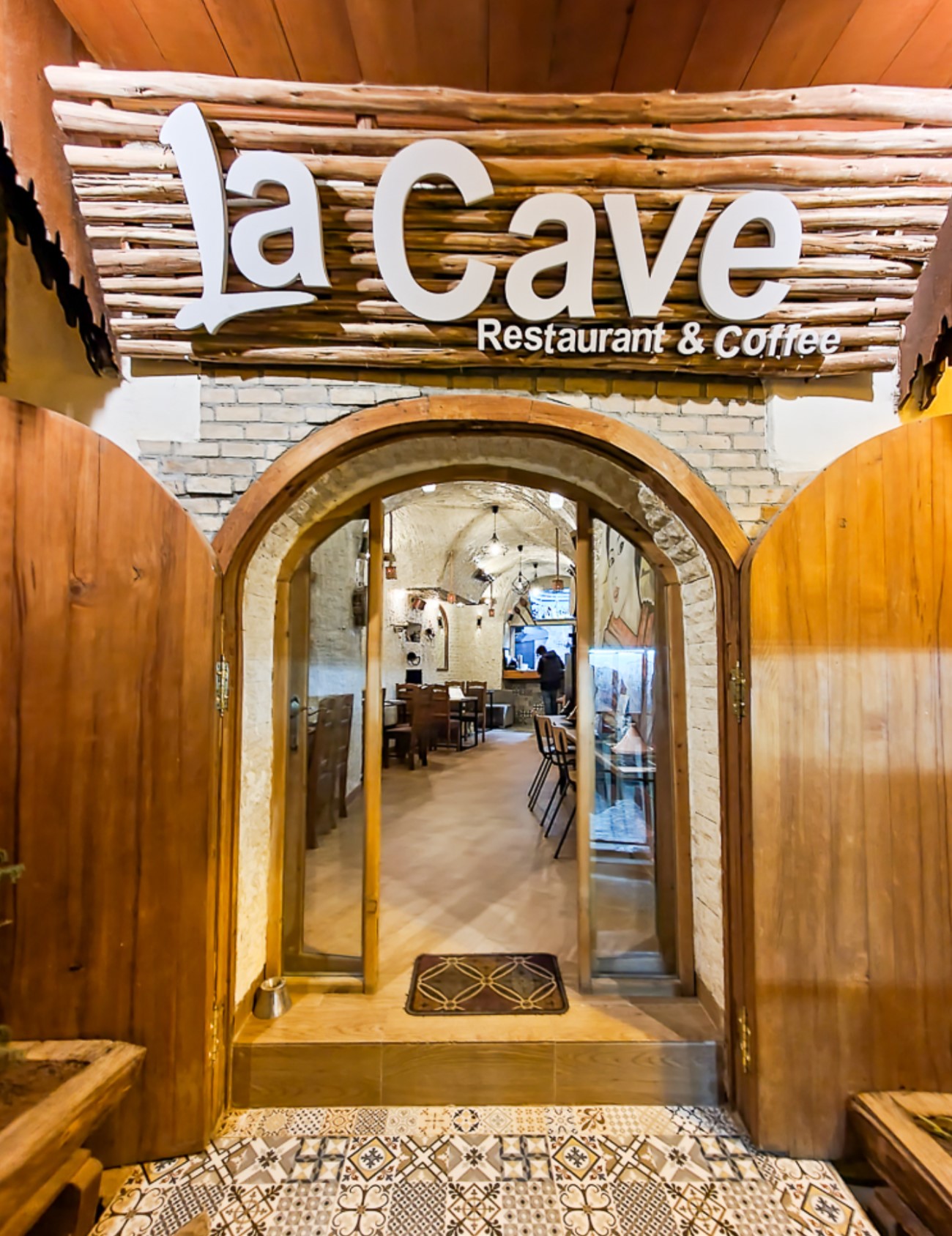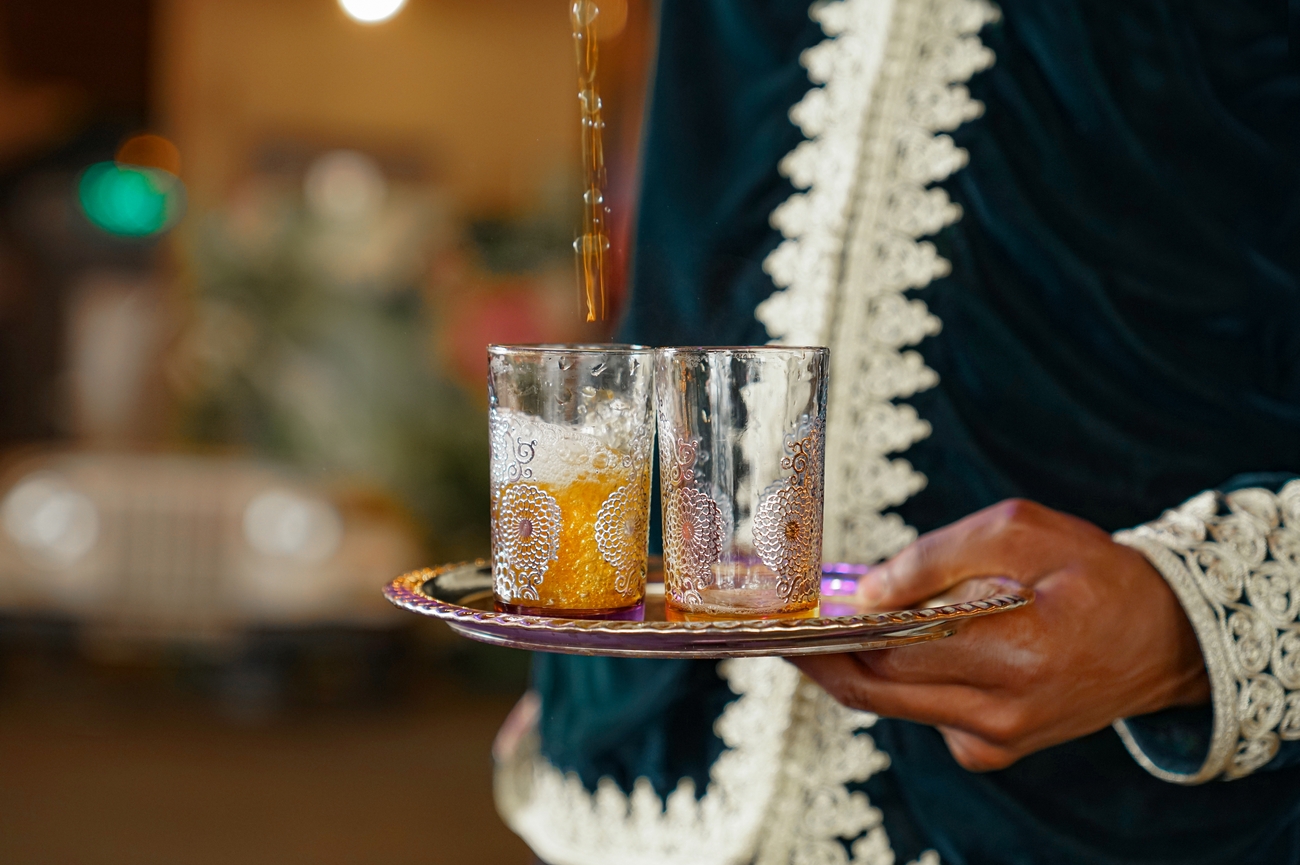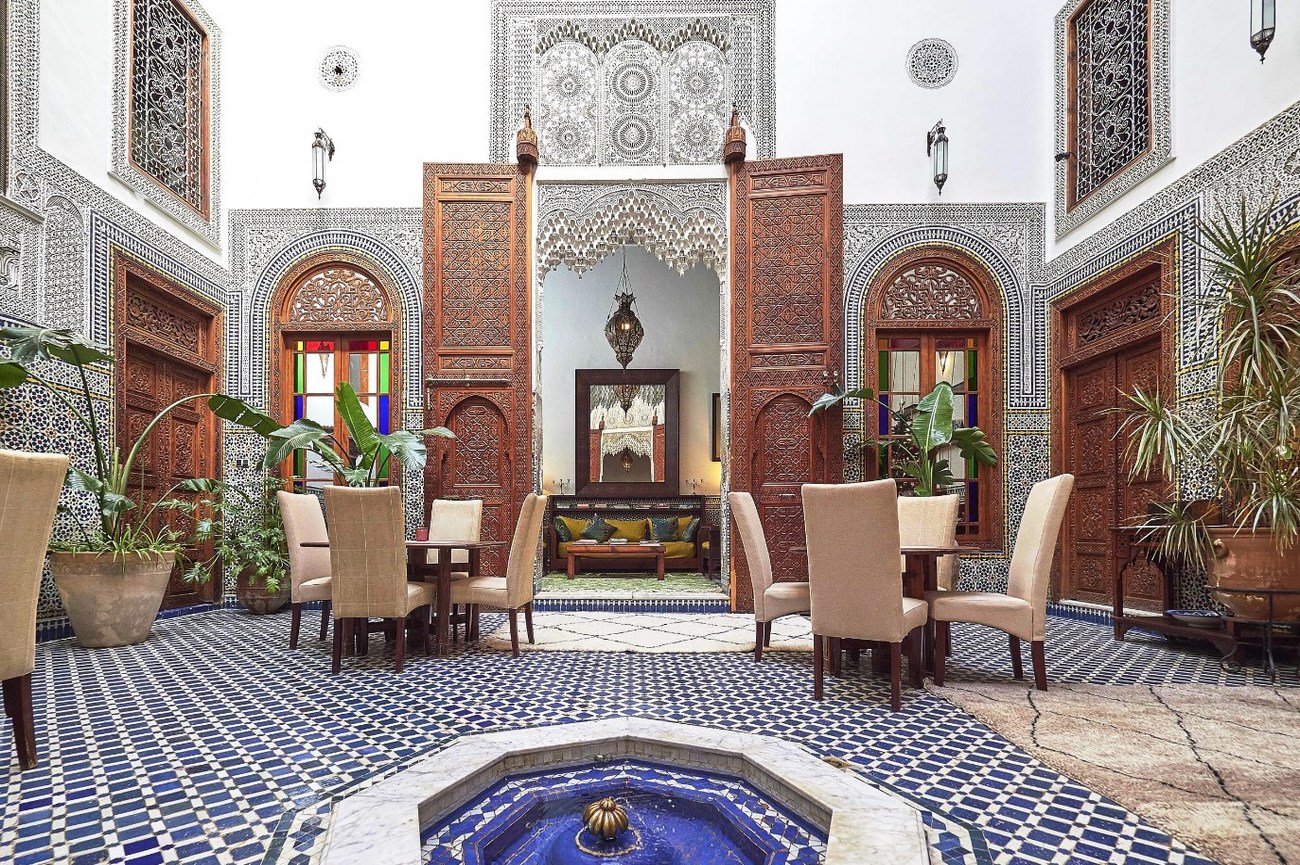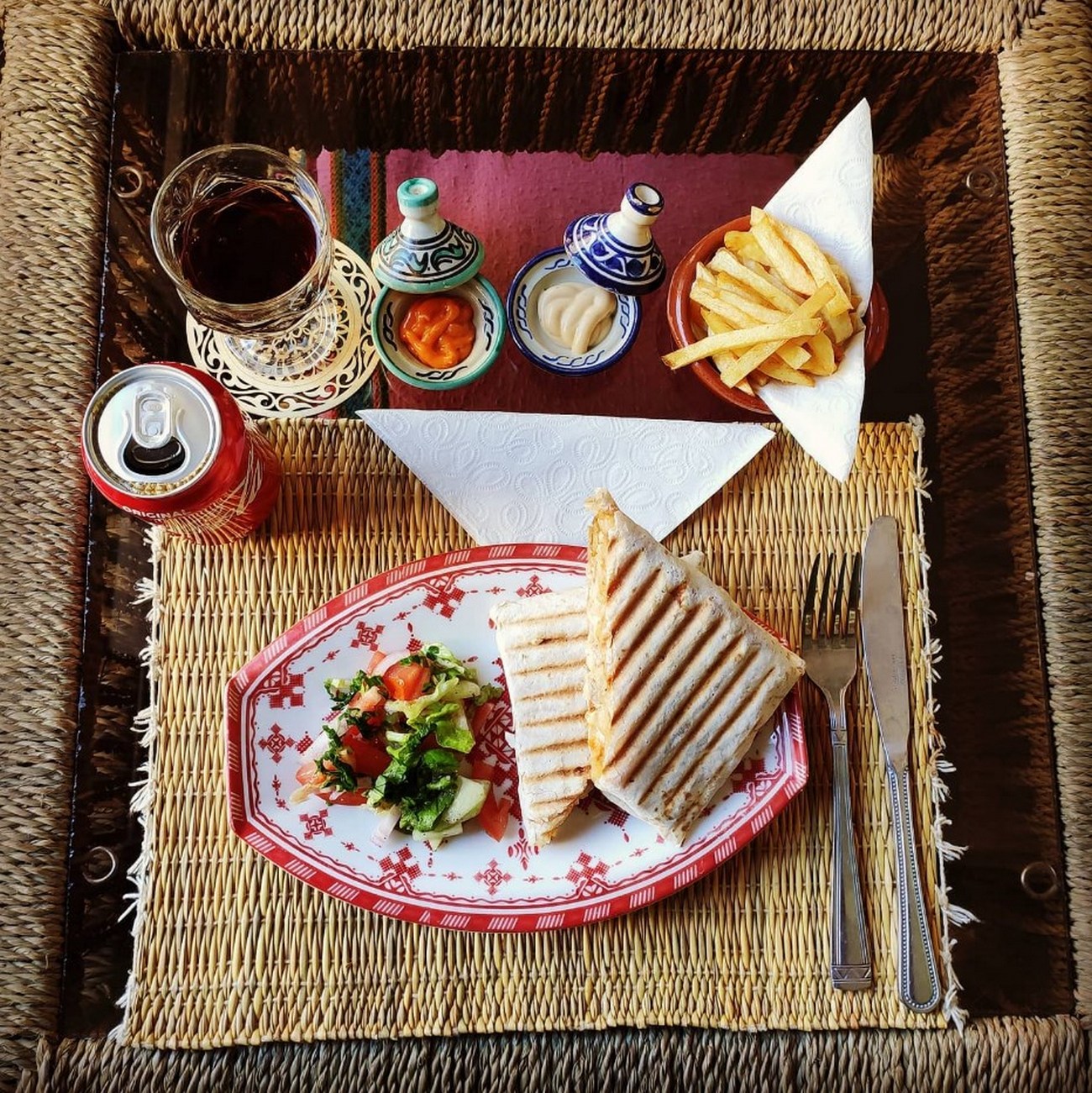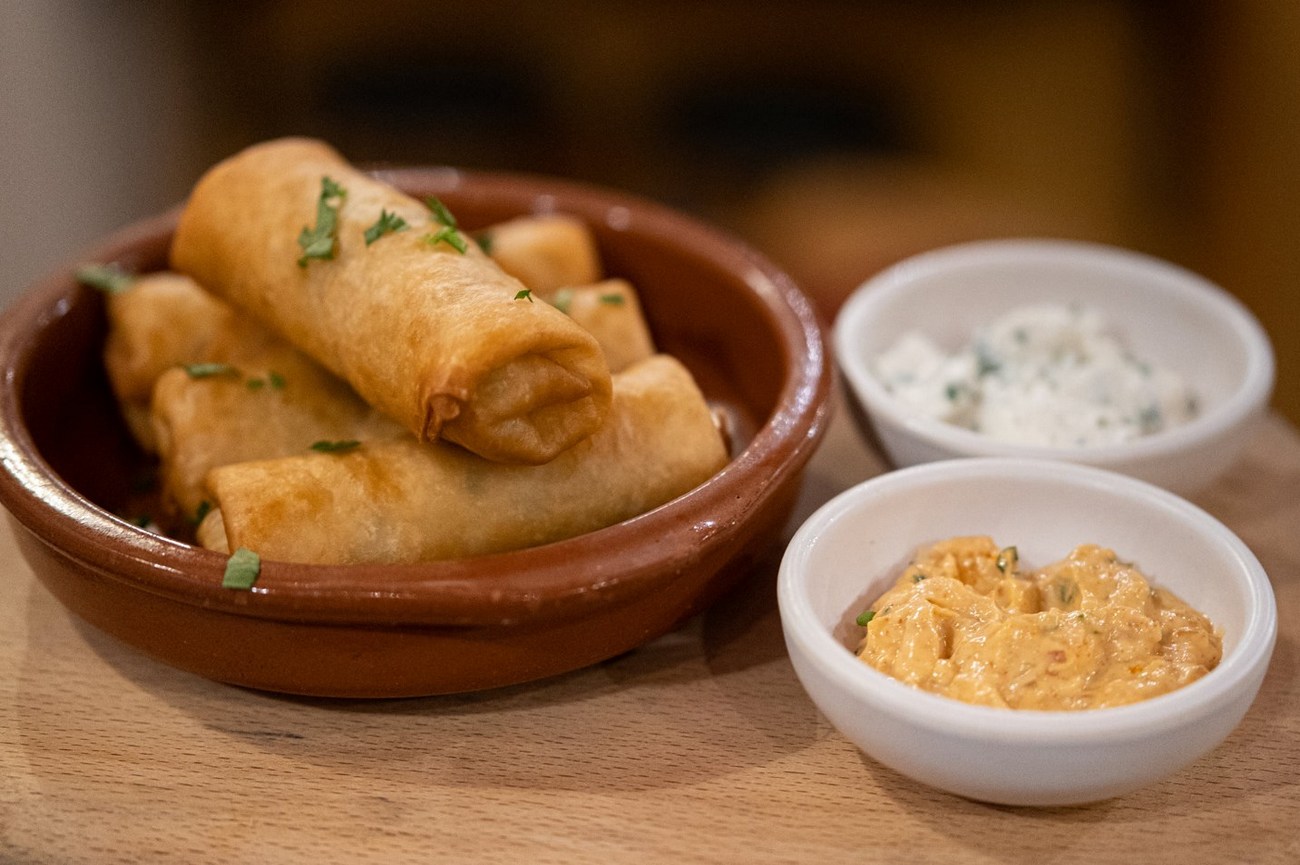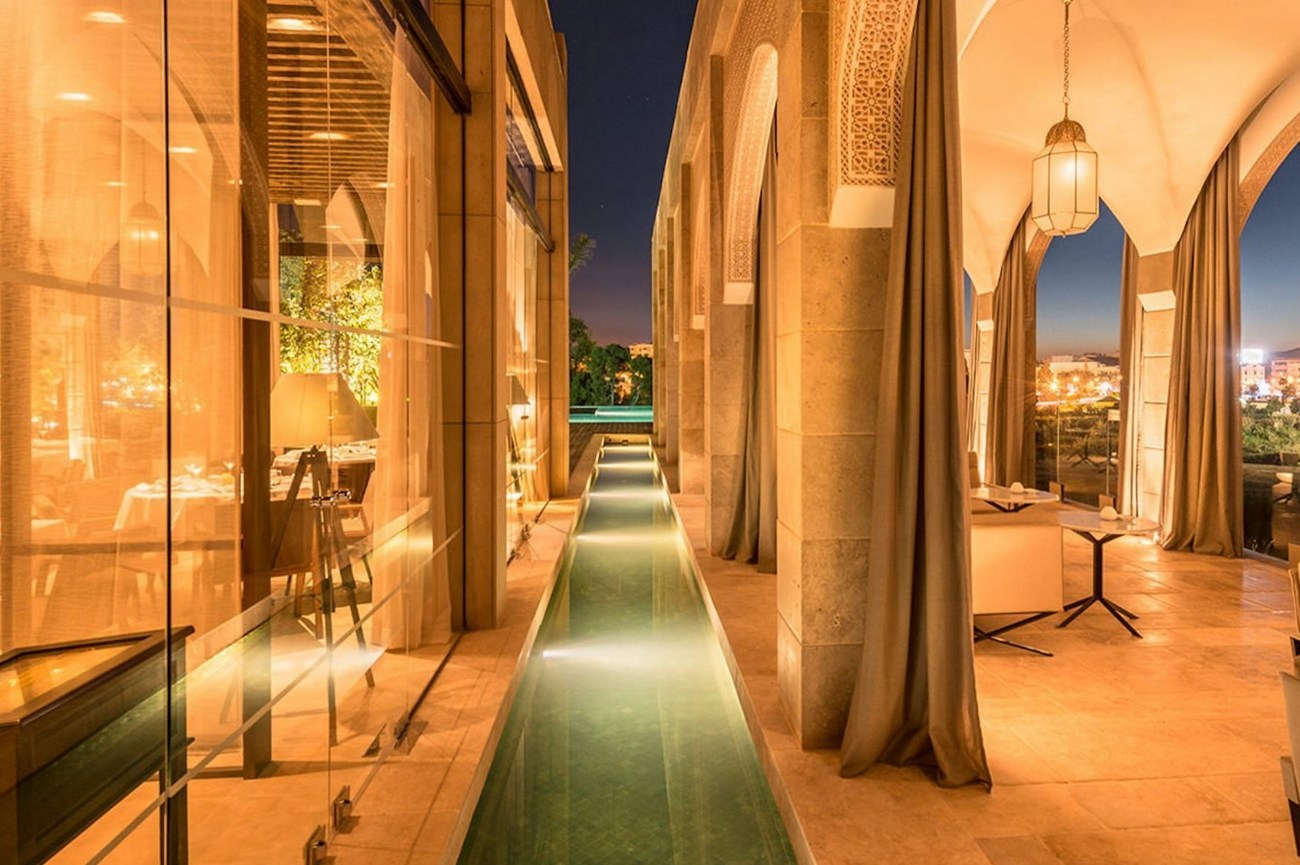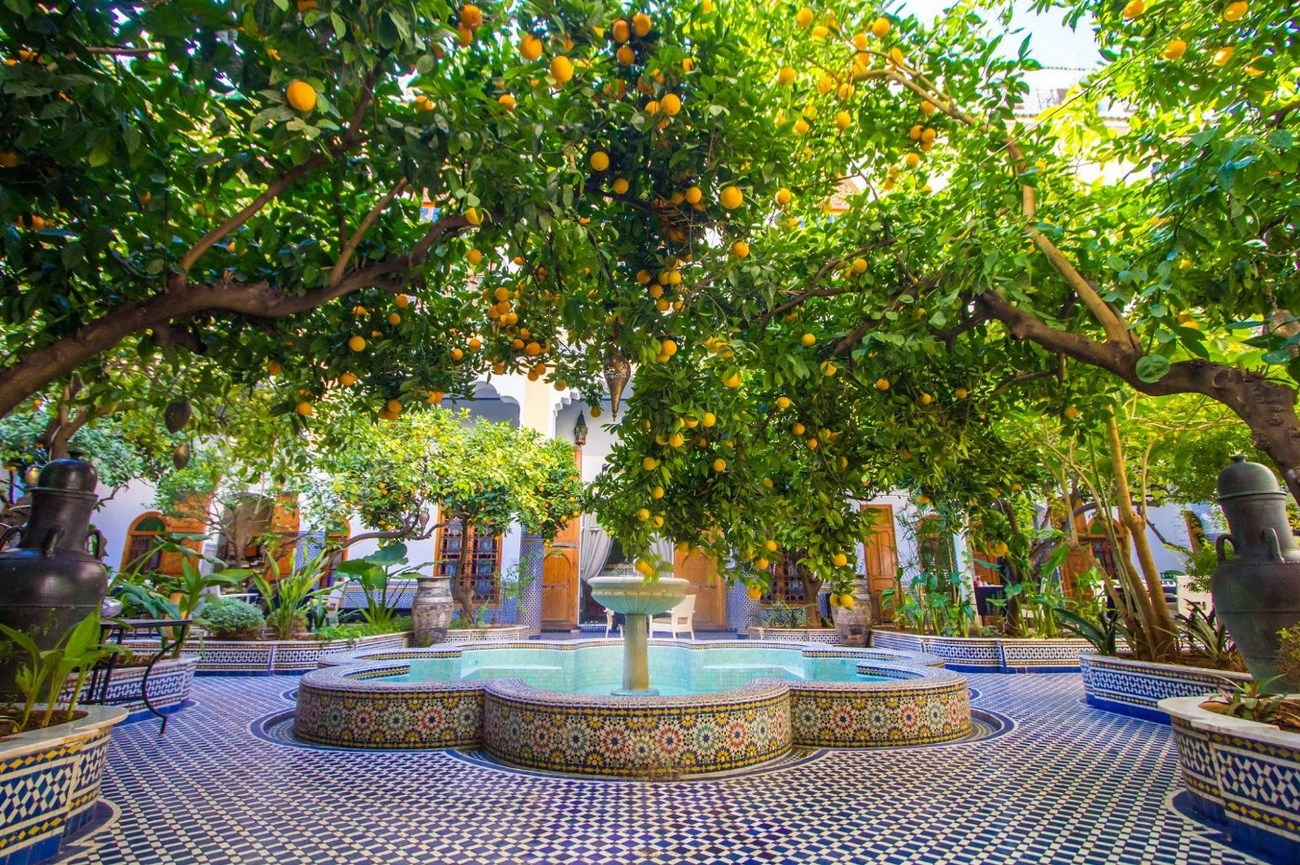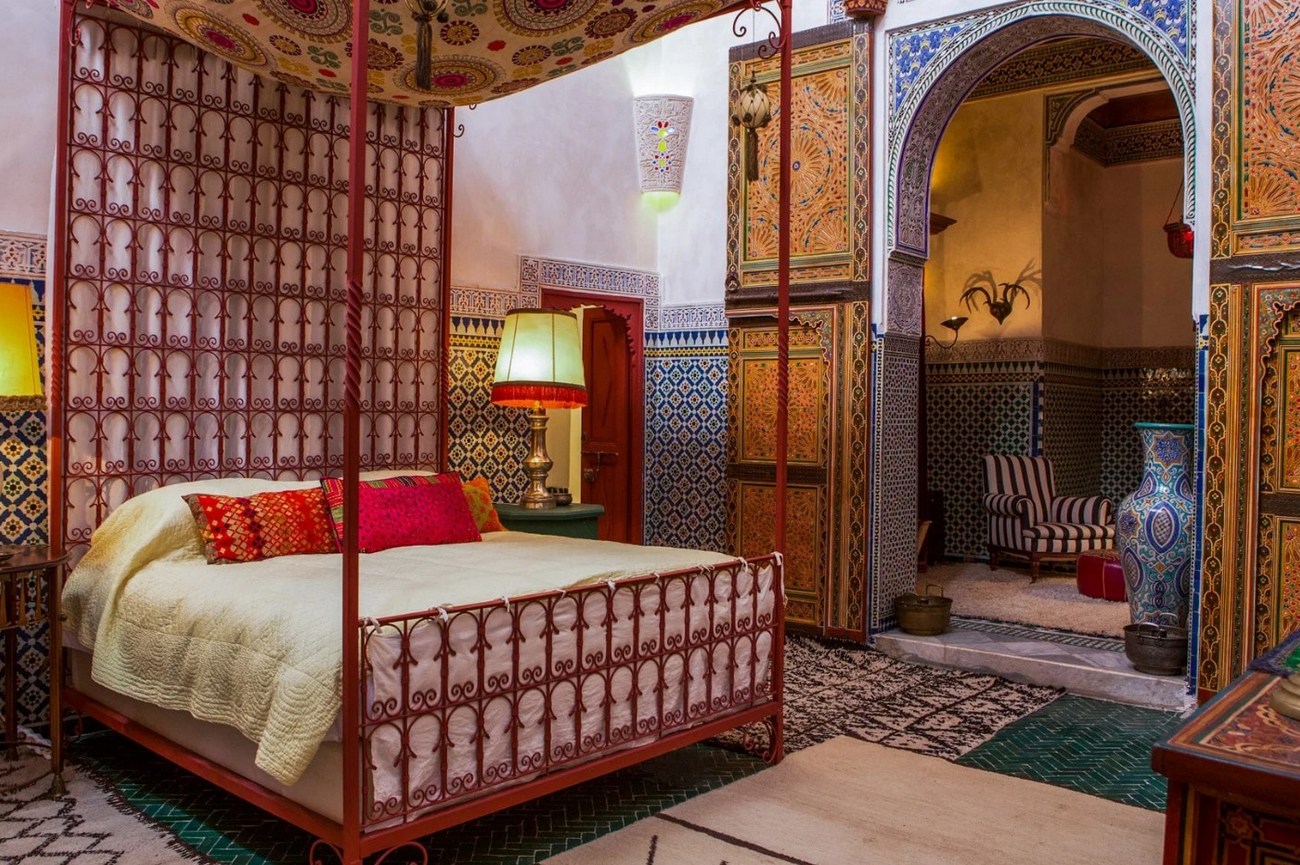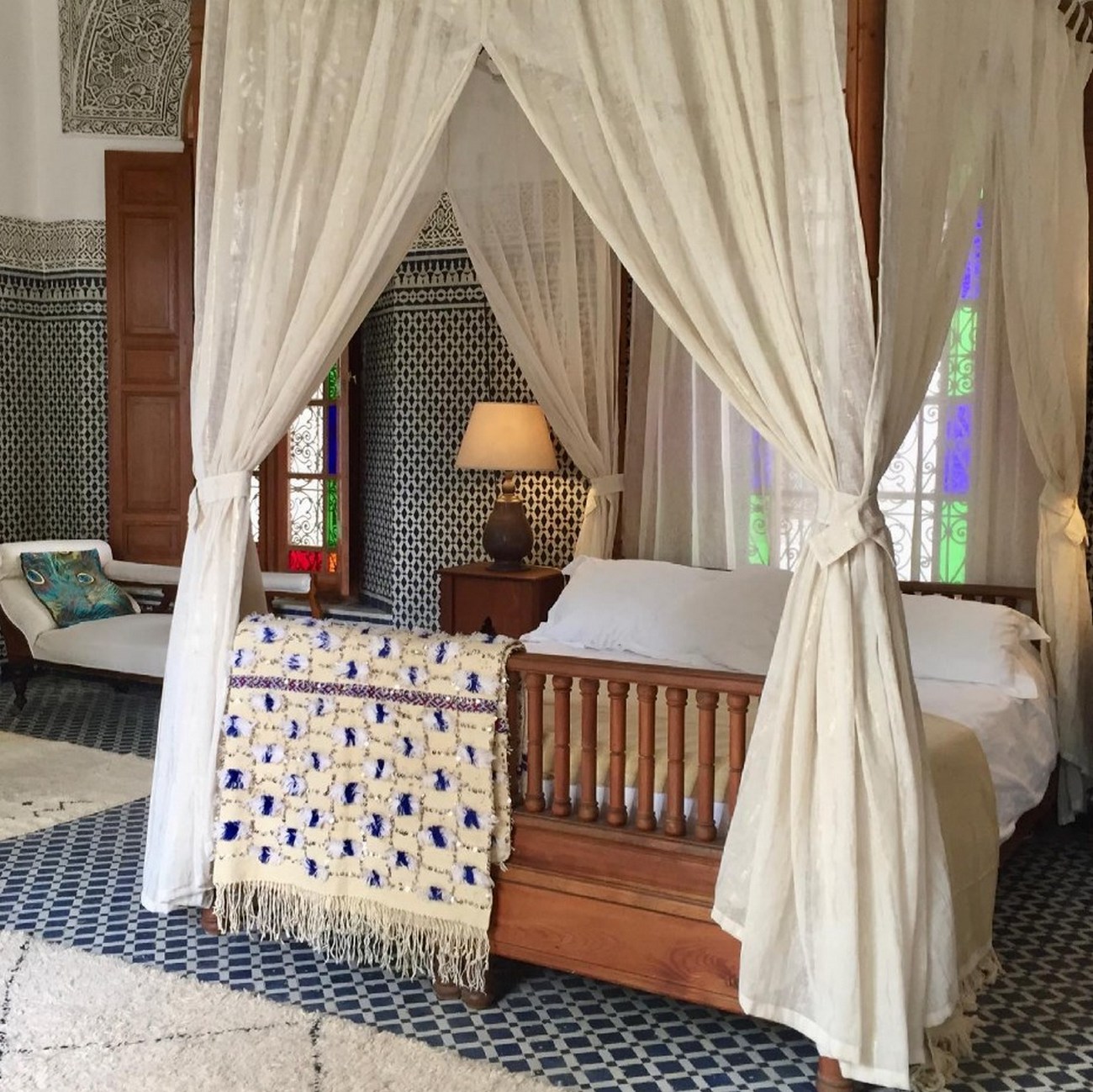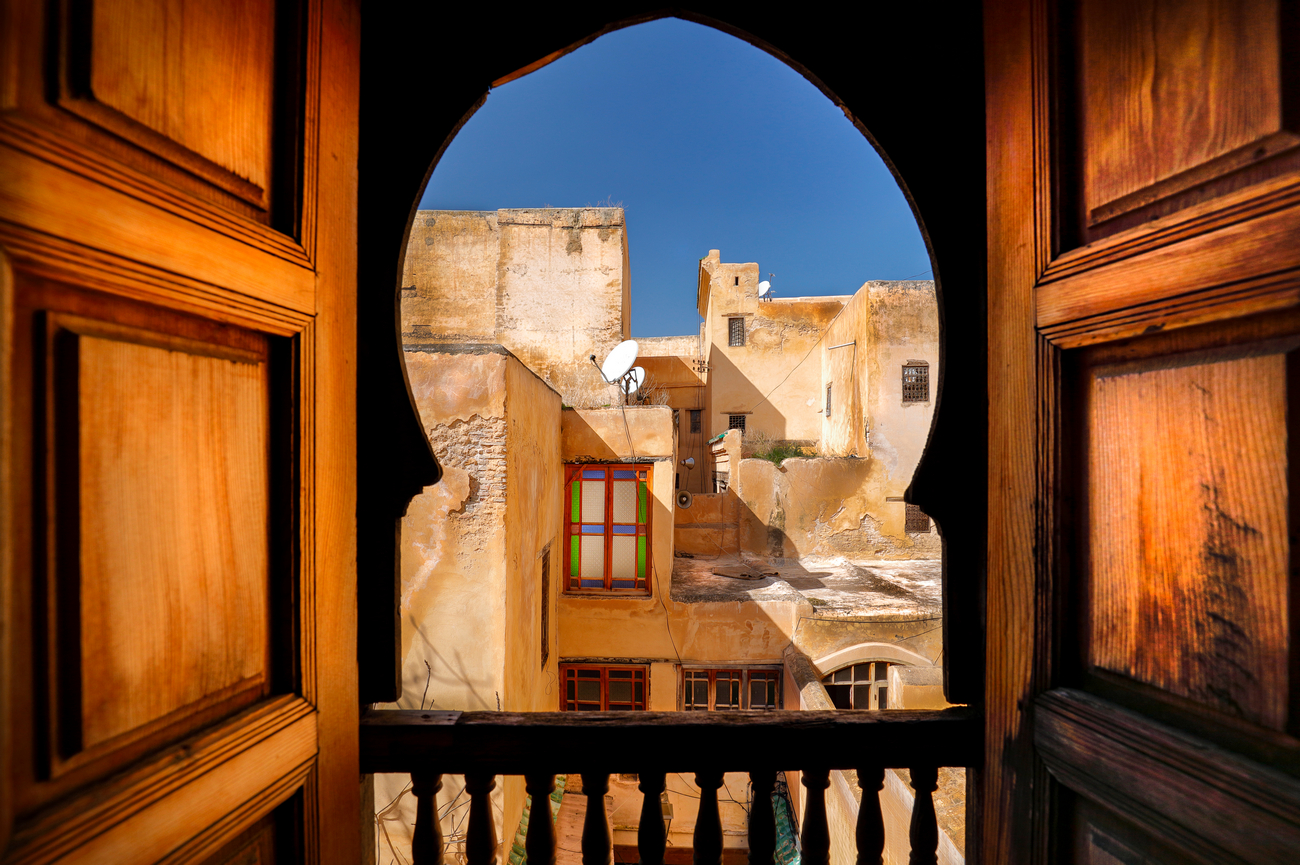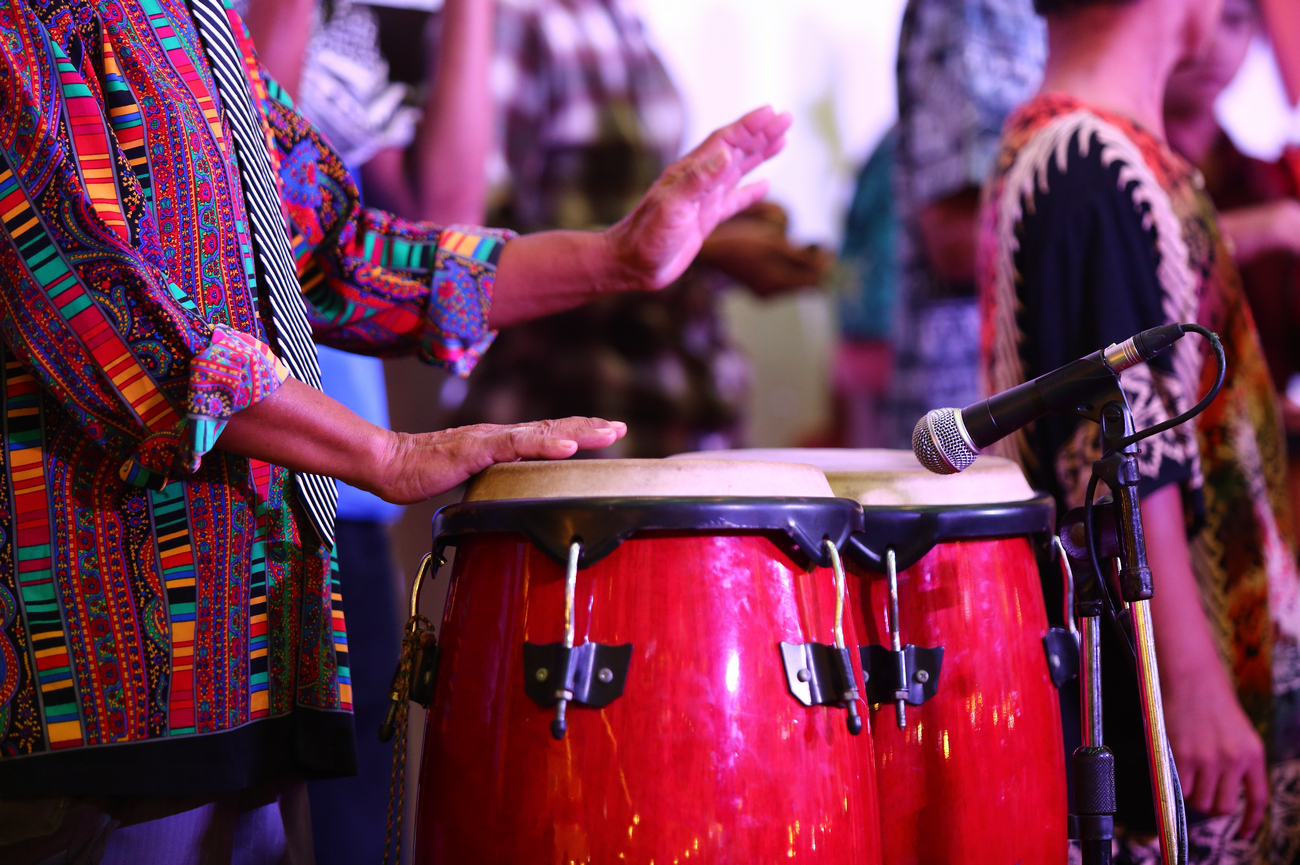Things to do in Fes: 2-day itinerary
Fes, also spelled Fez, was Morocco’s first capital, and it still retains much of its history in the traditional handicrafts, the tanneries and monuments such as the Al Attarine Madrasa. The city’s medina, known as Fes El Bali, is a Unesco Heritage site, and it’s where you’ll find the vibrant souks selling anything from copper to leather goods. Fes is the second most touristic city in the country after Marrakech.
Palaces and mosques are dotted around the city, alongside museums and tranquil gardens where you can unwind after a busy day of sightseeing. Our two-day itinerary highlights the best things to do in Fes, including tips on where to eat and stay so you can make the most of your trip.
Day 1

Morning: Fes El Bali
Fes is home to the oldest medina in Northern Africa dating back to the 9th century. Start by taking in its maze of narrow streets and traditional buildings. Visit the souks to find handmade crafts such as rugs and copper pots and keep an eye out for the orange juice stalls. The efforts that have gone into preserving these monuments and traditions have made the medina a Unesco Heritage site in 1981. It’s easy to get lost here, so make sure to remember your way back to the hotel. Marking the entrance to the medina is the Bab Bou Jeloud, a large gate featuring horseshoe arches and stunning blue tiles.
Bou Inania Madrasa
Among the top attractions in the medina is the Bou Inania Madrasa. This striking religious site was once a theological college. Established in the 14th century, it is now open to visitors. Enter through the large brass doors and take your time exploring the interior, admiring its marble courtyard, wooden carvings, and colourful tilework. The small rooms surrounding the courtyard were used as classrooms, and the top floor served as an accommodation for students. The building is also home to a mosque, meaning it can be closed during prayer times.
Nejjarine Museum of Wooden Arts & Crafts
Slowly make your way east until you reach the Nejjarine Museum. Housed in a former 18th-century inn, this museum focuses on Morocco’s traditional woodwork crafts. Each room showcases a variety of objects from small beads to musical instruments and even large-scale doors. You’ll also see examples of both Andalusian and Berber designs. The rooftop cafe is a great spot to capture the medina from above. However, be sure to ask for permission before taking photos.
Afternoon: Mausoleum of Moulay Idriss II
Moulay Idriss was the founder of the city of Fes. His tomb is located inside this mosque a few minutes from the Nejjarine Museum. While it’s closed to non-Muslims, you can still admire the wooden front doors and the stunning courtyard columns from the street. The building dates back to 1308, but the minaret you see today was added in the 17th century. It is one of the tallest minarets in the medina, meaning you can spot it from afar when exploring the surrounding streets.
Place Seffarine
Continue walking towards the Place Seffarine. This small square is home to the al-Qarawiyin Library, one of the oldest libraries in the world. The surrounding stalls sell a variety of copper items, including bowls, pans and teapots. If you want to experience a traditional mint tea ritual, head to the nearby Abdullah Thé & Café.
Al Attarine Madrasa
Just around the corner from the square is the Al Attarine Madrasa. Established in 1325 as a school, it is now one of the city’s main attractions. Visitors can wander inside to admire the striking courtyard with geometric tiles that cover both the walls and the floor. Other highlights include the wooden carved doors and the minaret.
Mosque and University Kairaouine
Students from Al Attarine Madrasa would often end up at the nearby University Kairaouine. Although this building is much older, dating back to 859. Indeed, it is among the oldest universities in the world. While it started as a small madrasa (school teaching the Quran), it has expanded over the years and now welcomes around 20,000 students, mainly focusing on Arabic language and Islamic studies. Only Muslims can enter, but you can admire the building from the entrance gates or one of the many rooftops dotted around the medina.
Chouara Tannery
Finish your day at the Chouara Tannery, one of the city’s largest tanneries. It has been in operation since the 16th century, and while it was renovated in 2016, it still has a medieval feel, especially when you look at it from the surrounding balconies. To access these, you have to walk through one of the leather shops and head up to the terrace. Try door number 10 on Derb Chouara or number 64. Many of the salespeople can explain their techniques, but they usually expect a tip or a sale in return. To see the pits field with colourful dye, it’s best to visit in the morning.
Day 1 - Fes Tour Map
Day 2

Morning: Mellah
Start the morning exploring the Jewish quarter of Fes, known as Mellah. It’s here you’ll find the Aben Danan, a 17th-century synagogue built for the Jews who were pushed out of Spain at the time. Inside, the blue octagonal pillars stand out against the wooden ceiling and the herringbone tiles on the floor. Noteworthy features include original Torah scrolls made of deerskin and a ritual bath in the basement, where you’ll also find a photo exhibit of Jewish districts around Morocco. There is another synagogue nearby called Al Fassiyine, but that one isn’t always open to the public.
Royal Palace
While you’ll need a special invite to go inside the Royal Palace, you can still admire the outside from one of its seven gates. Established in the 1960s, these gates feature shimmering bronze doors, surrounded by blue mosaic tiles and carved wood, making it a great spot for a photo op. The royal family and the government still use the building which is why it is closed for tourists.
Jnan Sbil garden
Make your way east towards the Jnan Sbil gardens. From here, you can spot the ornate minaret of Fes el-Jdid mosque. Take a moment to relax in this green oasis featuring over 3,000 plant species. It’s a great place to escape the heat, thanks to its shady paths and cooling fountains. Keep an eye out for the bird coops where you’ll often find peacocks and doves. The park often welcomes outdoor concerts in the summer.
Afternoon: Borj Nord
If you’re up for a walk continue to the Borj Nord, a 16th-century fortress built by Sultan Ahmed Al Mansour to surveil the city of Fes. It has a similar design to European forts, with its sandstone walls and star-shaped floorplan.
Marinid Tombs
A few steps from the fortress are these historic tombs founded in the 14th century. Although they are mostly in ruins now, this is a great spot to take in the views of Fes and the surrounding mountains. Many locals head here at dusk to watch the lights turn on and hear the prayer calls.
Hammam
Take a taxi back to the city centre and enjoy a relaxing bath at one of the public hammams. There are many to choose from, but some of the top ones are the Mernissi & Spa and Les Bains Amani. Many hotels and riads also come with their own private hammams, so it’s worth looking into it when booking your stay.
Day 2 - Fes Tour Map
Other things to see in Fes
- Borj Sud: Established by the same sultan as Borj Nord, this 16th-century fort is located on the south edge of Fes. It has been a Unesco Site since 1981, alongside the medina.
- Ain Nokbi: If you want to learn more about the ceramic traditions of Fes, you should visit this district on the east side of town. Many local potters moved to Ain Nokbi in 2013, and, since then, it has become a popular attraction for visitors. Art Naji is among the many workshops here selling traditional tilework and ceramics. Many offer small tours that take you through the production stages, from working with the clay to painting. Prices often include the guides’ commissions, but you can often negotiate if you show up on your own.
- Nouvelle Ville: The New Town represents the more modern side of Fes, dating back to the 20th century. It was created during the French rule and is where many foreigners live today. Walk around the main boulevard, Avenue Hassan II, where you’ll find a variety of cafés with terraces. Grab a coffee or a mint tea, and then continue walking towards the tree-lined square of Place Florence.
- El Glaoui Palace: It’s worth touring this 18th-century palace, complete with large salons, a kitchen and a harem court, all adorned with colourful tiles and ironwork.
Day trips from Fes
- Sefrou: Less than an hour from Fes is this small Berber town touching the Middle Atlas. It’s worth wandering around the medina and spotting the ancient inns known as fanadiq. The town once had one of the biggest Jewish communities in Morocco, with nearly 8,000 people living there. These days, it is mostly famous for its cherry festival, which happens every year in June.
- Meknes & Volubilis: These two imperial cities were once the capitals of Morocco’s empires. Meknes is located within the Atlas Mountains and is only an hour’s drive east from Fes. It is famous for its traditional Moorish gates. Meanwhile, to the west, is Volubilis, a city that holds one of the best-preserved Roman sites in Morocco. Many companies offer day trips that combine the two cities, as well as the holy town of Moulay Idriss.
- Ifrane: About 40 miles south of Fes, you’ll find the hilltop village of Ifrane. It has a distinct feel from the rest of Morocco with its red-roofed houses and snowy winters. It is home to one of the largest cedar forests in the world, and in between you’ll find a series of lakes and waterfalls, making it a popular spot for hikes. You may even spot a Barbary macaque or a deer along the way.
- Rabat: If you want a taste of the sea, drive a few hours west towards Rabat. This picturesque coastal city is home to noteworthy sites like the medieval citadel, Kasbah des Oudayas, and the Exotic Gardens of Bouknadel.
- Chefchaouen: Set along the Rif Mountains, Chefchaouen is located about a 4-hour drive north of Fes. It is often called the blue city thanks to its collection of bright blue buildings. Other highlights include the Grand Mosque with its octagonal layout and Spanish ruins. Because it’s a bit of a long drive, you may prefer to stay the night here. Alternatively, you can book a guided tour and return on the same day.
- Erg Chebbi: If you’re looking for an adventure in the desert, you may like to visit the Erg Chebbi. The area offers a variety of activities including camel treks, 4x4 tours and birdwatching. You can also take part in the traditional sand baths in Merzouga.
Best golf courses in Fes
There are two golf courses in Fes: the Oued Fès and the Royal Golf de Fès. The first one is the closest to the centre and was designed by Jonathan Gaunt. It has 18 holes with a wide driving range and an academy ideal for beginners. Meanwhile, the Royal Golf is a half-an-hour-drive south and has tracks between lakes and huge bunkers that stretch up to 1200m2. If you don’t mind going a bit further south, then you can also check the Michlifen Resort & Golf in Ifrane which is a championship golf course designed by Jack Nicklaus set amid mountains and cedar forests.
Things to do with kids in Fes
There are many ways to experience Fes with kids. A tour of the medina is probably the best starting point. There is no traffic here (only donkeys), meaning you can explore the maze of streets at ease and absorb the sights and smells that make up this medieval city. A guided tour may be helpful if you want to get a glimpse of the history while you go. Another way to get to know the local culture is to join a cooking class or a hands-on workshop at a ceramic studio or an art school like Craft Draft.
Where to eat in Fes
- Chez Rachid: Just next to the Bab Bou Jeloud gate, this restaurant serves traditional Moroccan dishes like lamb tajine and chicken pastilla. Plates are set up over bright blue tablecloths, and the tables face the medina streets.
- Café Clock: Café Clock offers great views of the medina from its terrace. They’re known for their camel burger, but you can also try many other treats, including the Berber eggs, which make for a great breakfast choice. They offer a variety of activities, including jam sessions, film screenings, and cooking classes.
- La Cave: La Cave is a modern restaurant that serves a mix of international and Moroccan dishes. You can try anything from pasta to tajine and couscous. The interior stands out with its white stone walls and a colourful geisha mural.
- Darori: More than food, Darori offers a stunning surrounding with its tiled-covered courtyards and fountains, typical of a Moroccan riad. Most of the ingredients come from the R'cif market, and the menu changes according to what’s available. Some of the highlights include the pigeon pastilla and the beef tajine.
- Dar Roumana: You don’t need to stay in this riad to eat at its charming restaurant combining French and Moroccan cuisine. Chef Younes Idrissi has curated the menu, which features dishes like roast pumpkin salad paired with tahini and fresh chilli, braised rabbit and dark chocolate tart. Reservations are highly recommended.
- Al Oud: Functioning as both a café and a restaurant, Al Oud is a great spot for any time of day. Enjoy tea and Arab pastries for breakfast, or come a little later to try more substantial dishes like the harira soup or the lamb tajine.
- Le Tarbouche: This cosy restaurant serves a variety of regional dishes like chicken pastilla and tabbouleh salad. To pair with these they offer delicious fruit teas and lemonades.
Where to stay in Fes
- Hotel Sahrai (5 stars): This luxury hotel, with a blend of Moroccan and contemporary influences, is only a 10-minute drive from the Medina of Fes. Hotel Sahrai offers a garden, a spa, and wellness centre in addition to an outdoor pool. Enjoy a breathtaking view of the Medina from its rooftop bar.
- Palais Amani (5 stars): Occupying a 17th-century palace, this five-star hotel offers a stunning interior with carved arches and a serene courtyard lined with orange trees. It features 21 rooms, including a grand suite with separate dressing rooms and great views of the surrounding gardens. Other facilities include a restaurant, two bars, a cooking school and a luxury hammam.
- Riad Jardin des Biehn (5 stars): Once the summer retreat of the Pacha El Mokri, this converted riad stands out with its lush surroundings. It features eight suites and six rooms, all of which have been carefully restored to follow the traditional Moroccan architecture. Guests also have access to a restaurant and a hammam.
- Dar Roumana (2 stars): Located in the heart of the medina, this boutique hotel is ideal if you’re looking for a more affordable option. It only has five suites, so it feels quite secluded. Each room is decorated with crafts from Fassi artisans with the occasional modern detail. There is also a modern restaurant onsite.
Best time to visit Fes
The best time to visit Fes is around spring or autumn. The days are pretty warm during these seasons, but not too hot so you can still enjoy a walk around the city. Temperatures begin to rise in the summer sometimes reaching up to 37ºC. That said, you can enjoy longer daylight hours if you visit at this time. Plus, you get to experience one of the city’s main events the Festival des Musiques Sacrées du Monde. Winter can also be a good season, especially if you want to see snow in nearby towns like Ifrane.
Fes Festivals
- Festival des Musiques Sacrées du Monde: Fes has been hosting this annual music festival since 1994. It usually takes place in early June and lasts for about 10 days. During that time you’ll experience a variety of events including concerts, debates and performances from artists around the world. These happen all over the medina and other historical areas.


